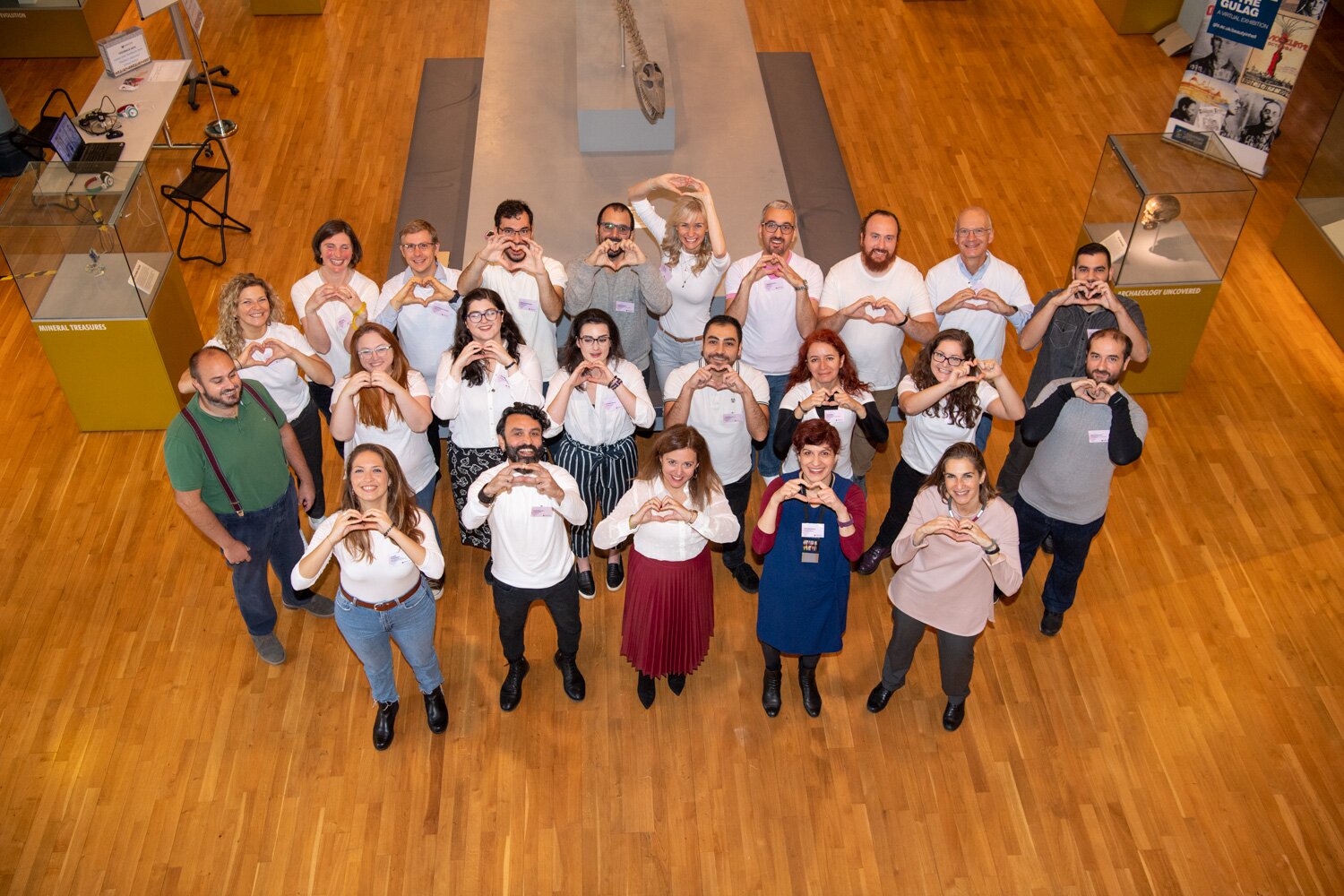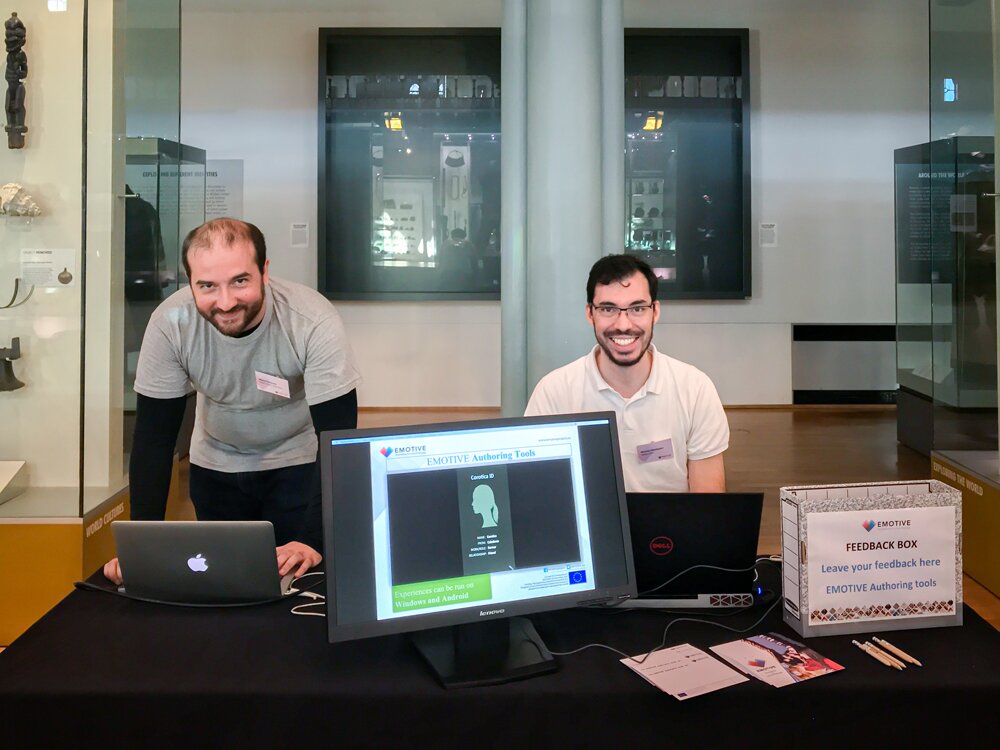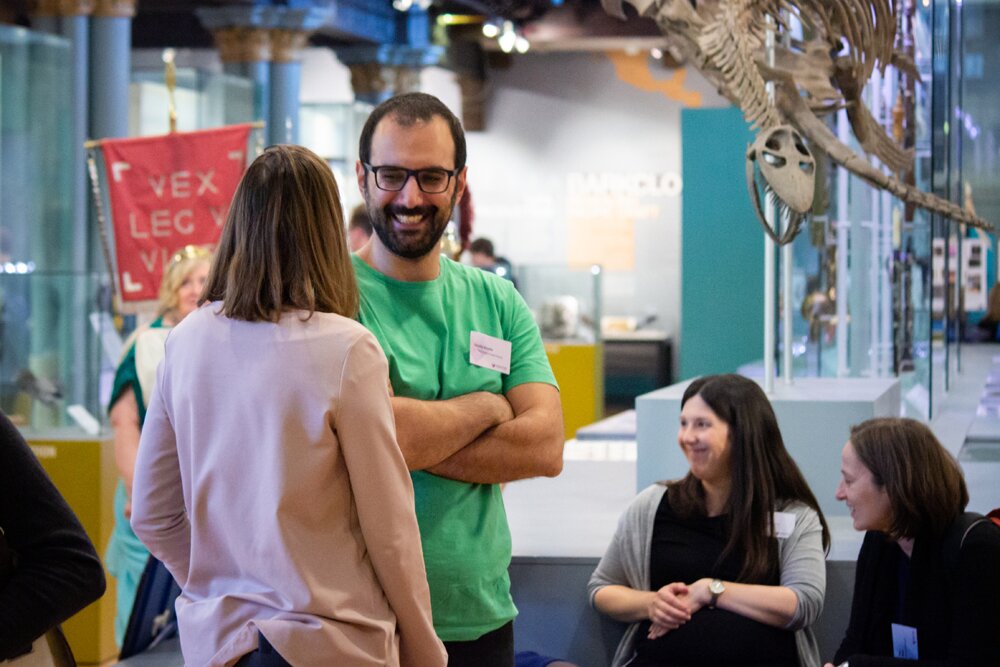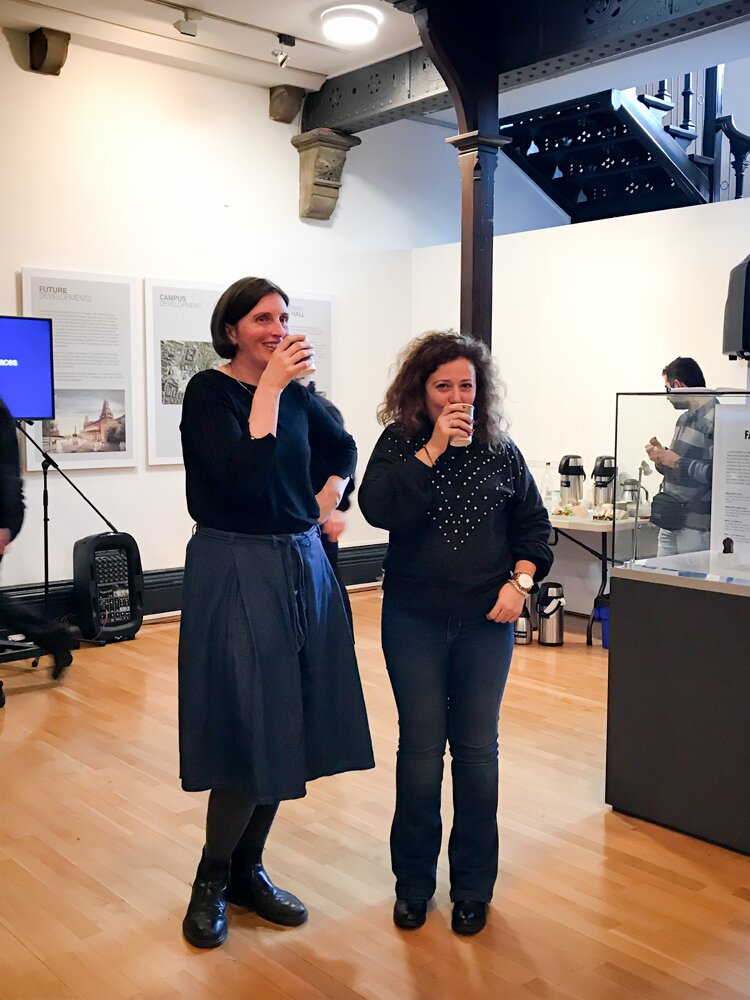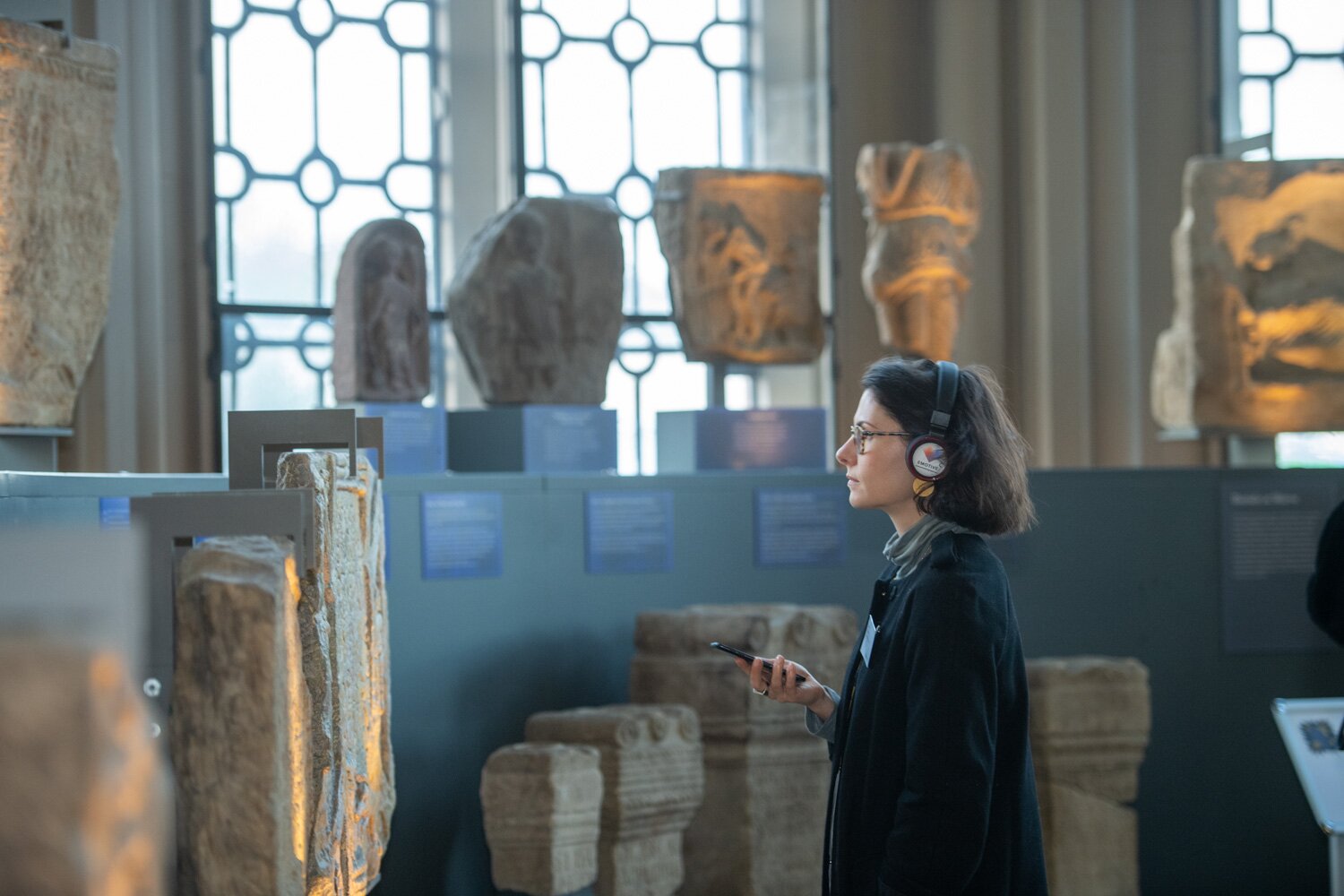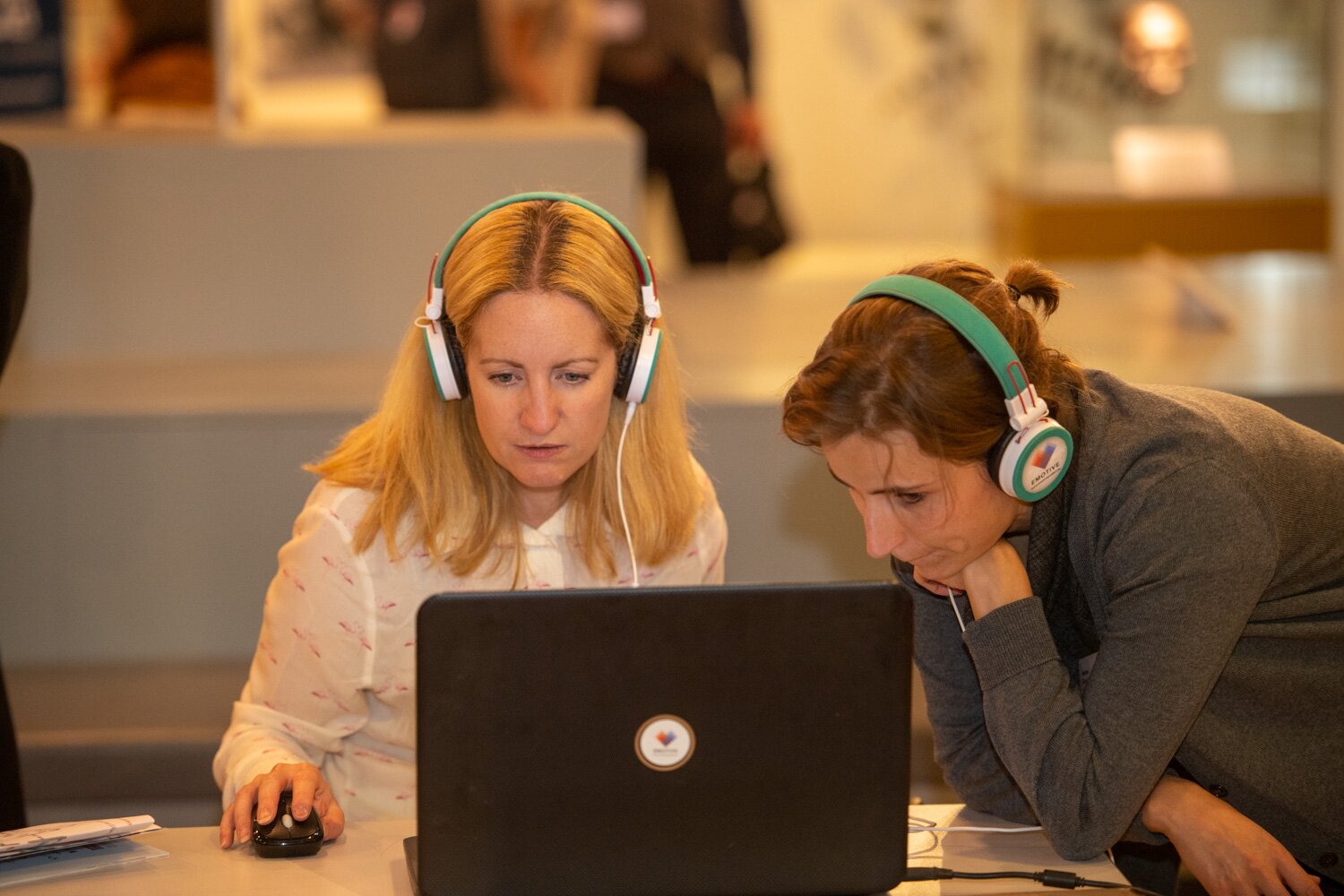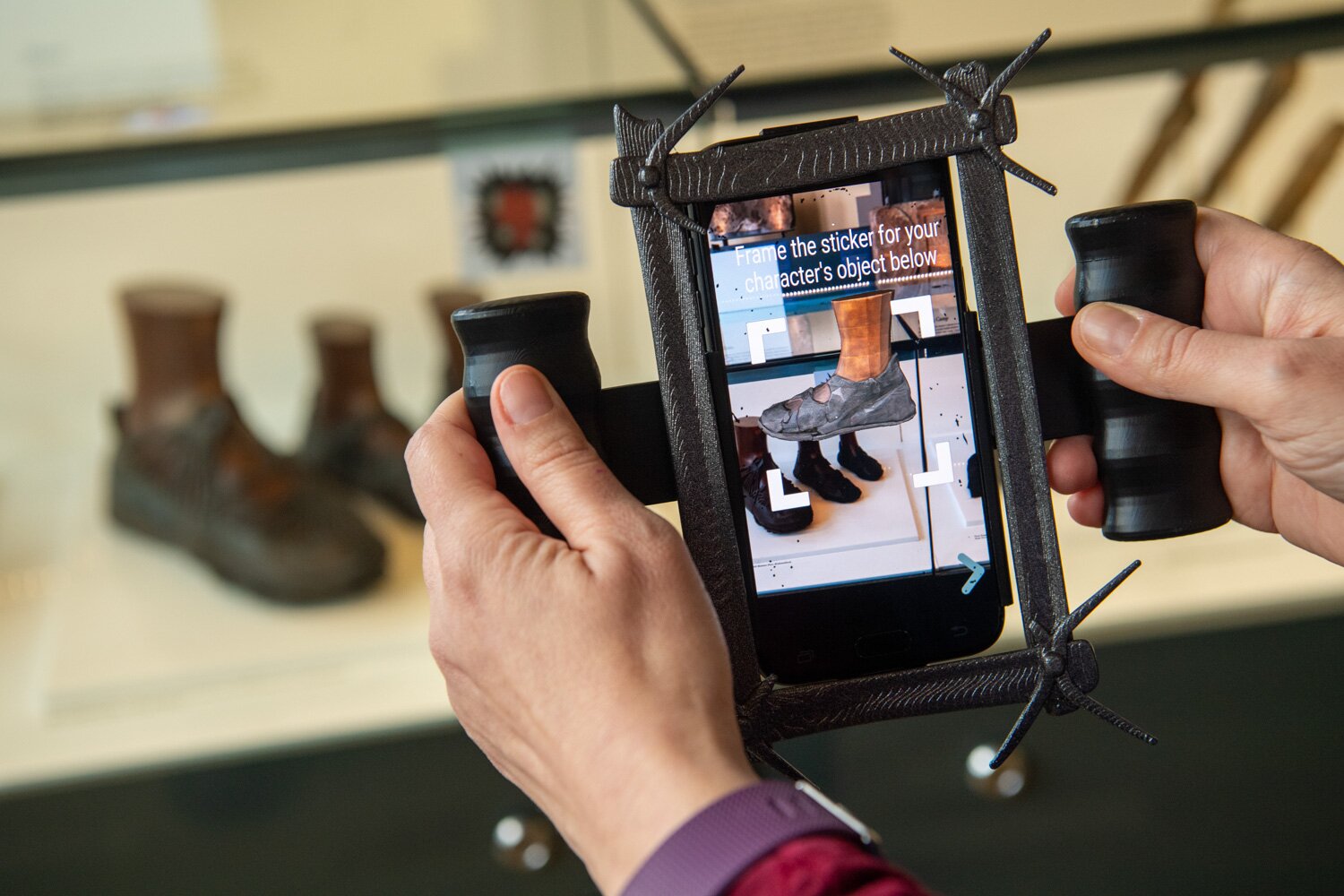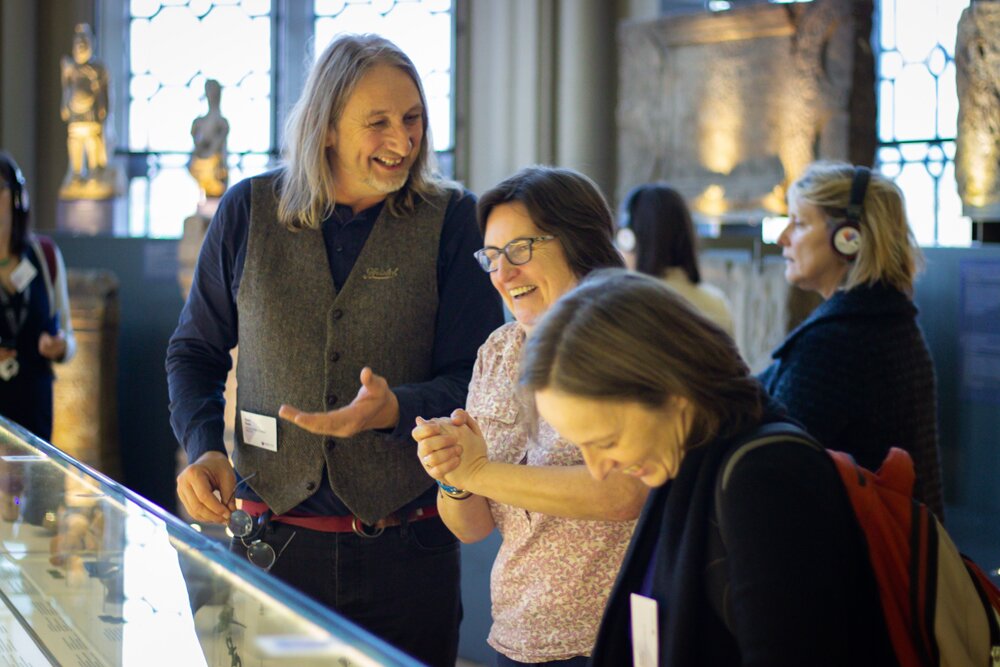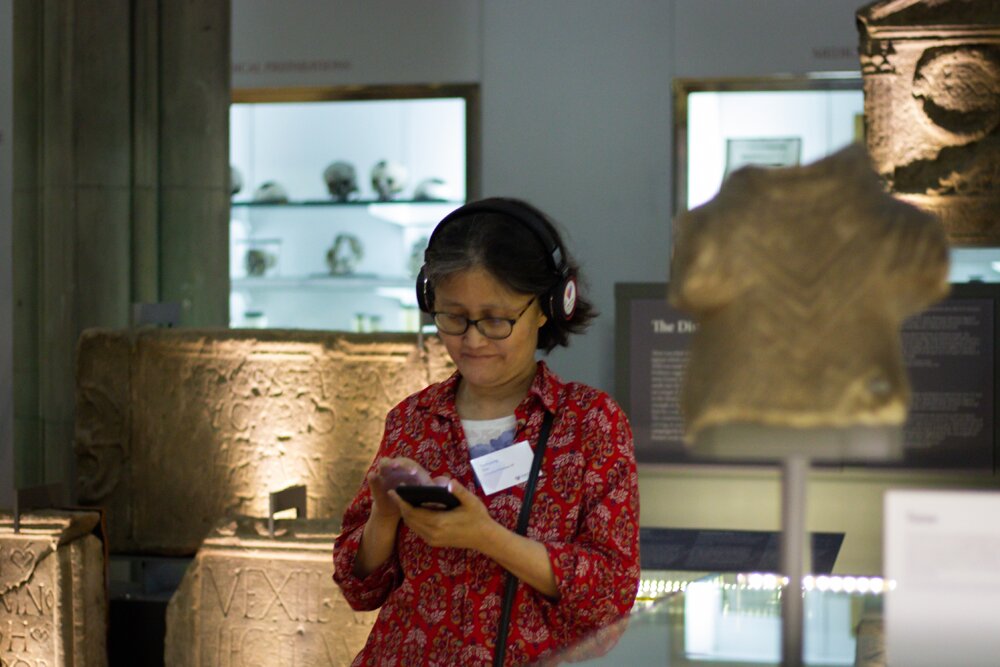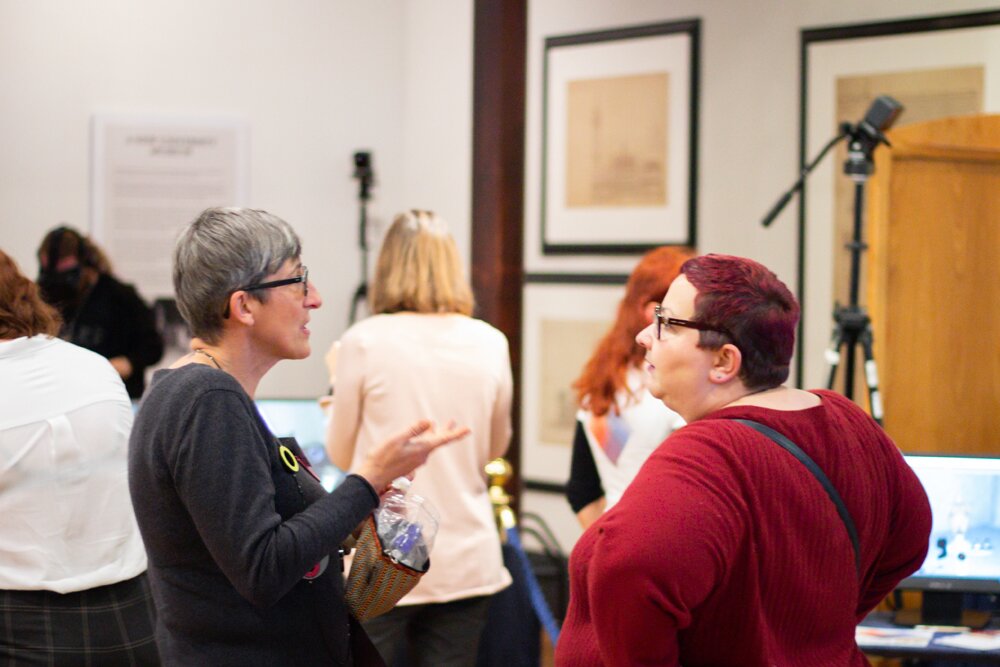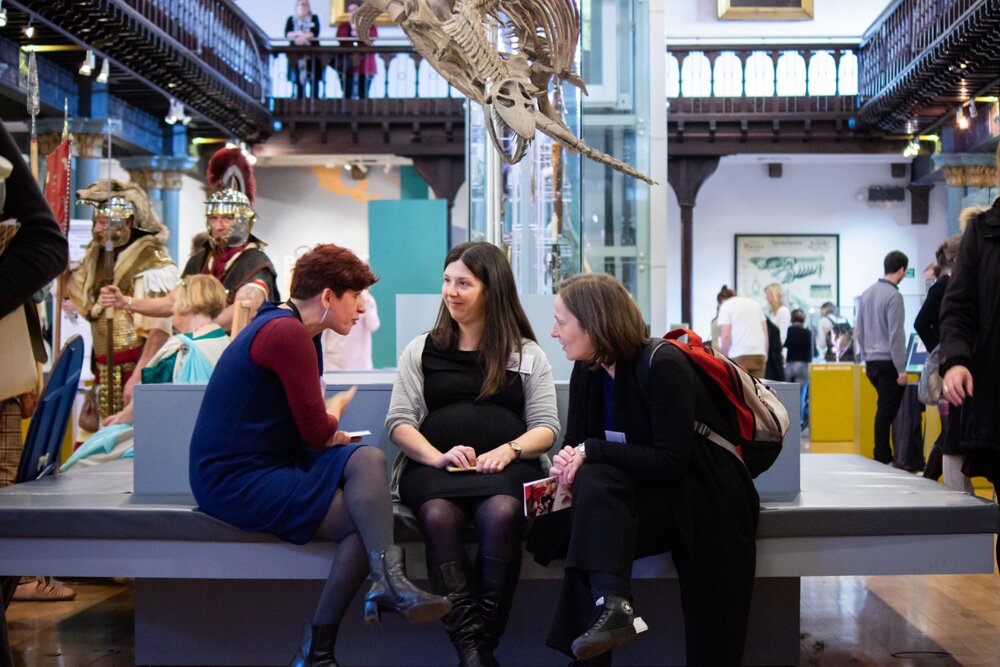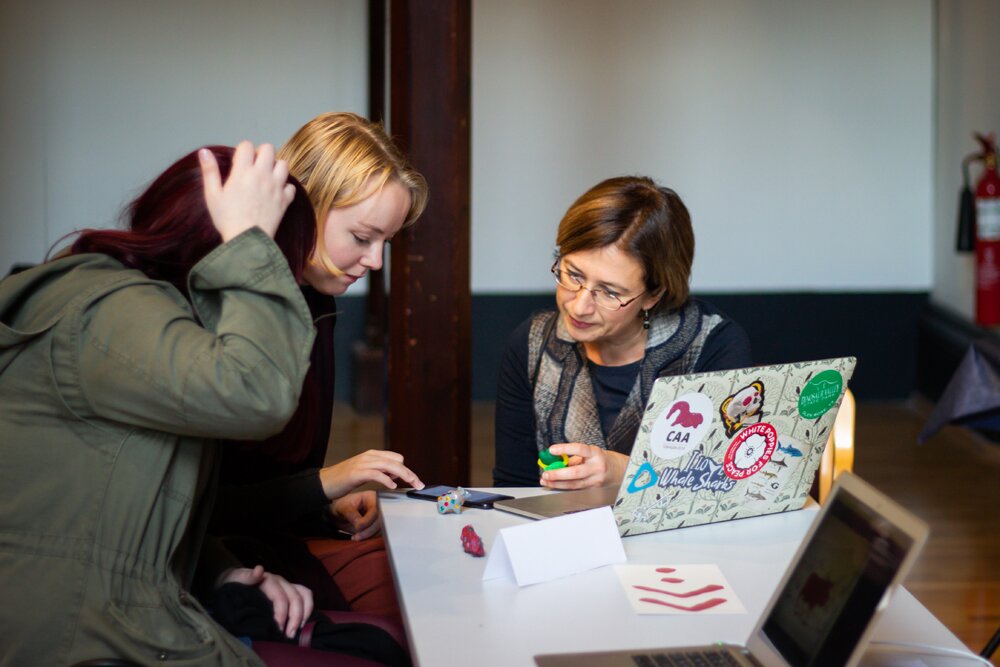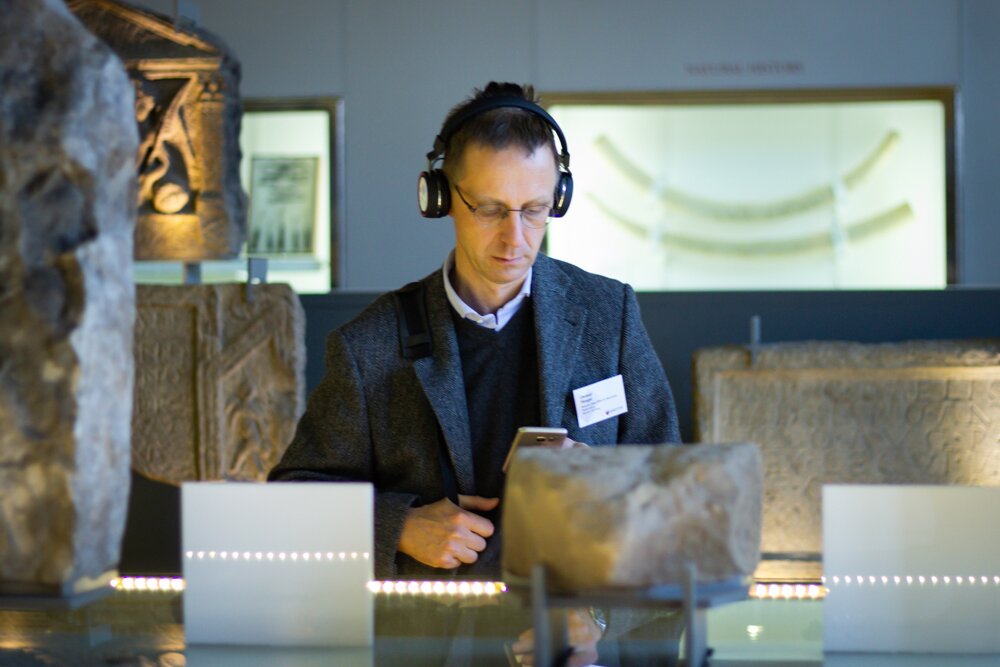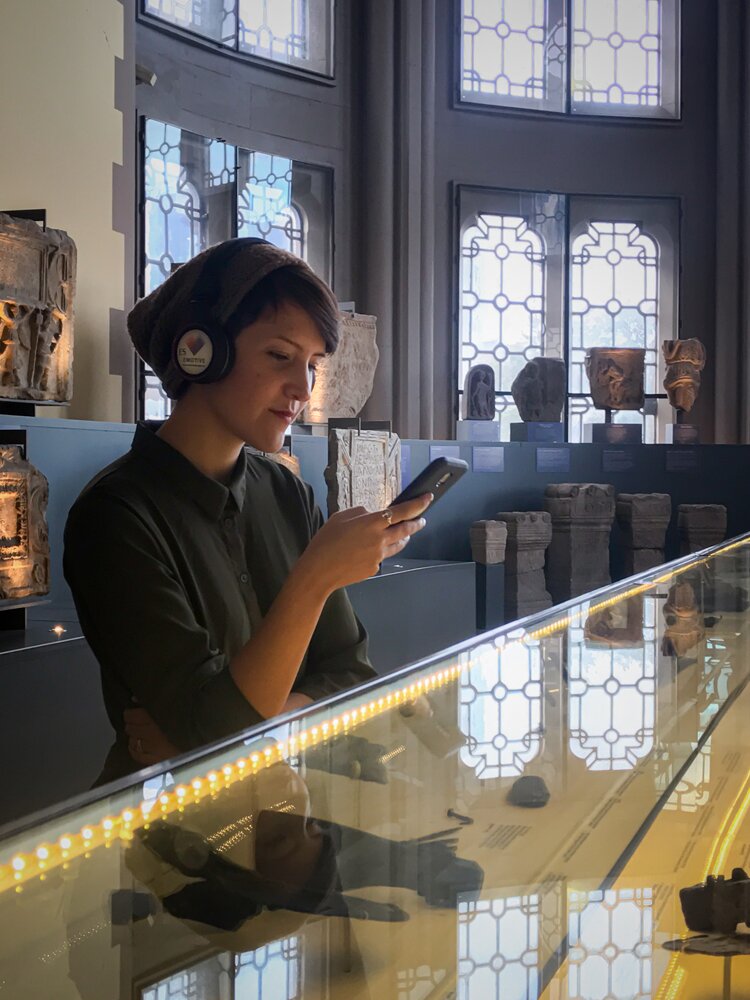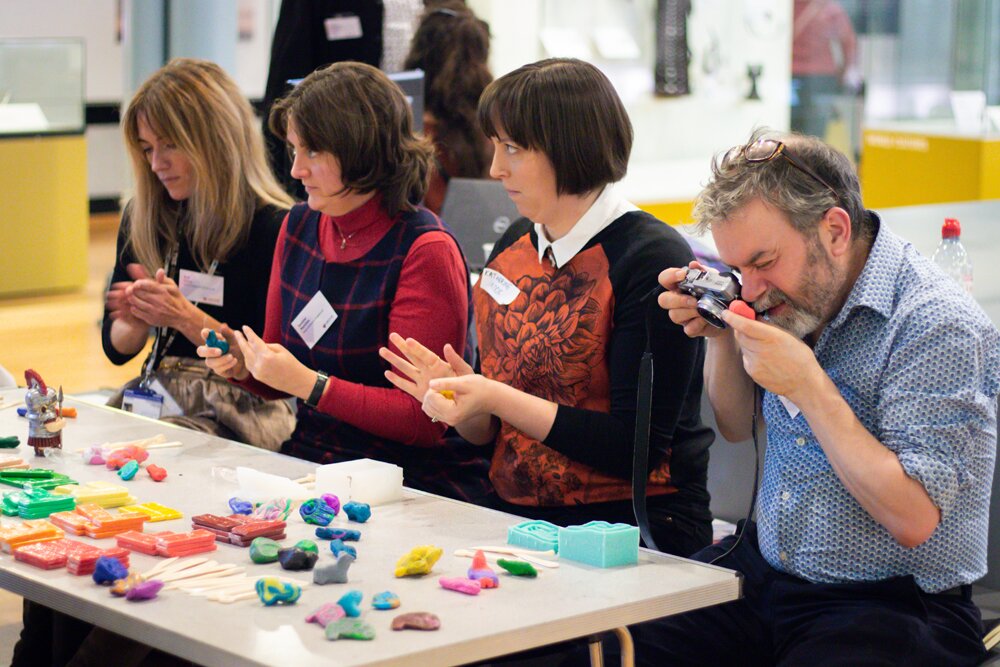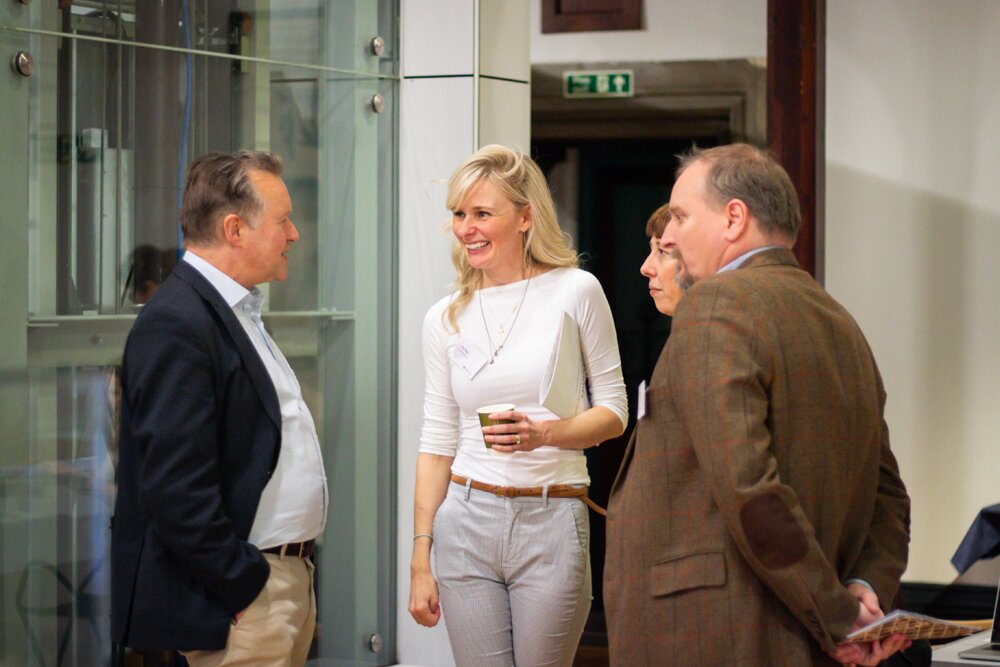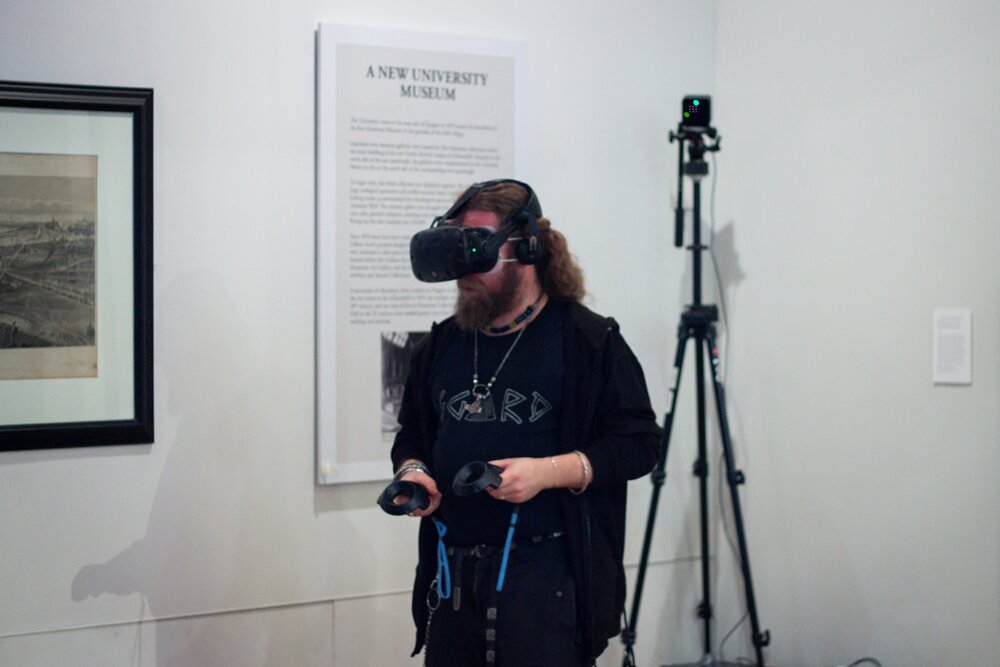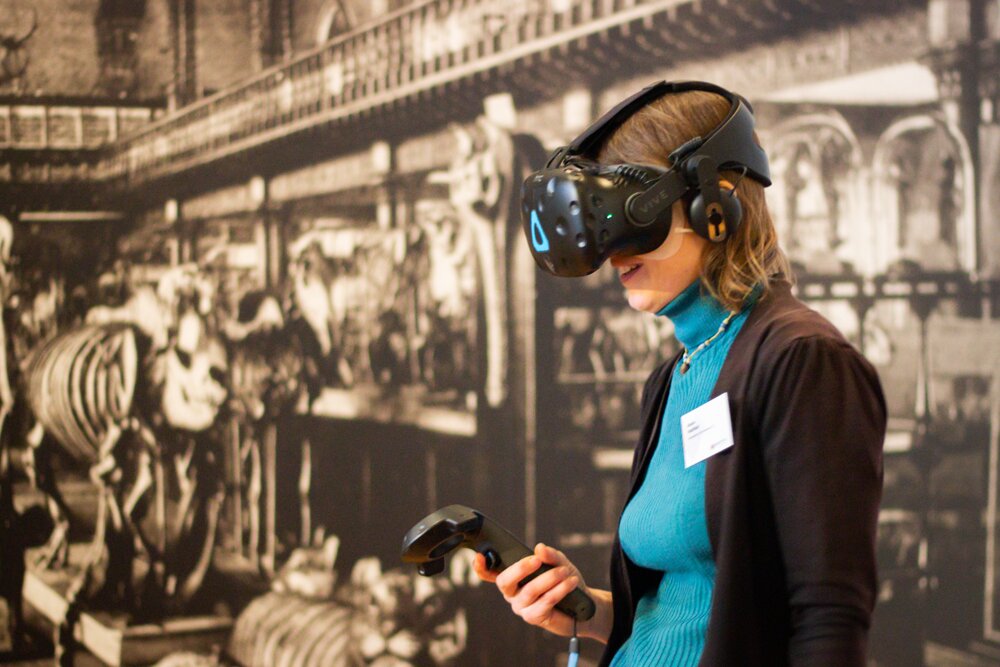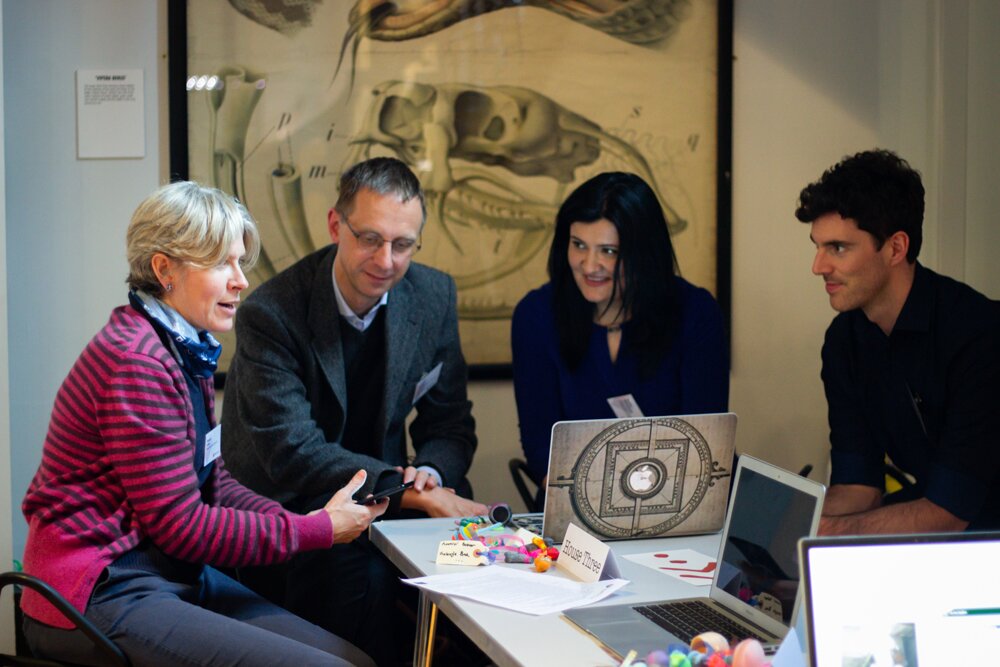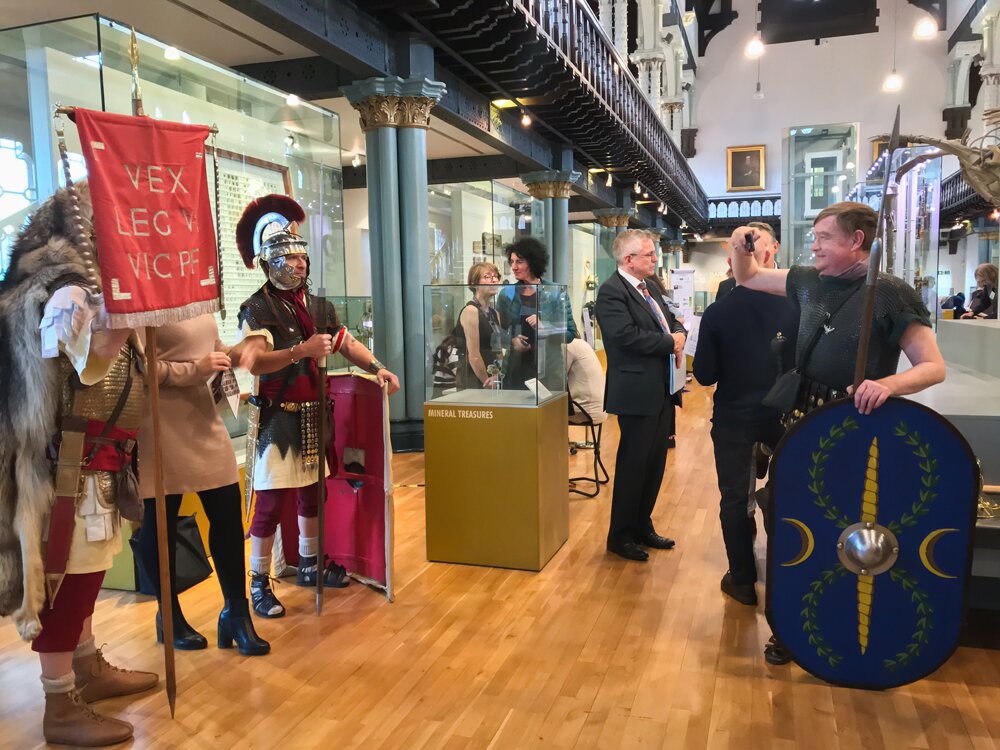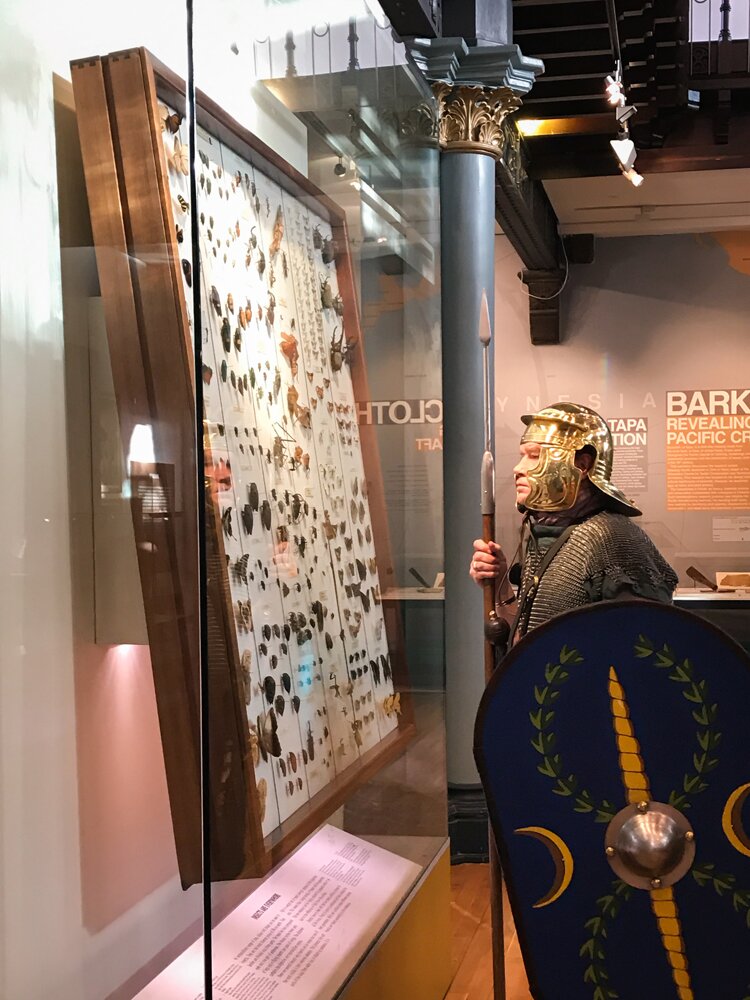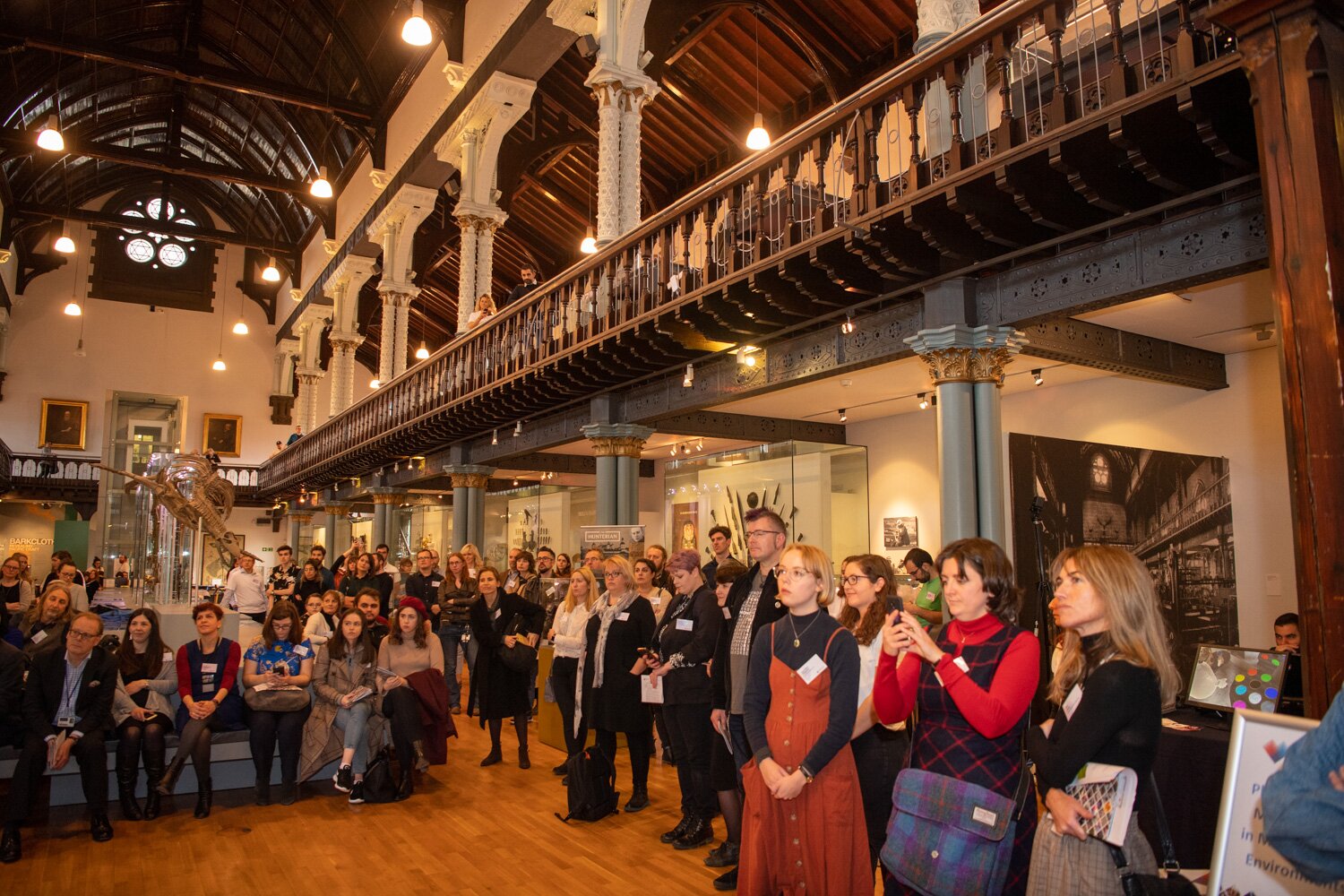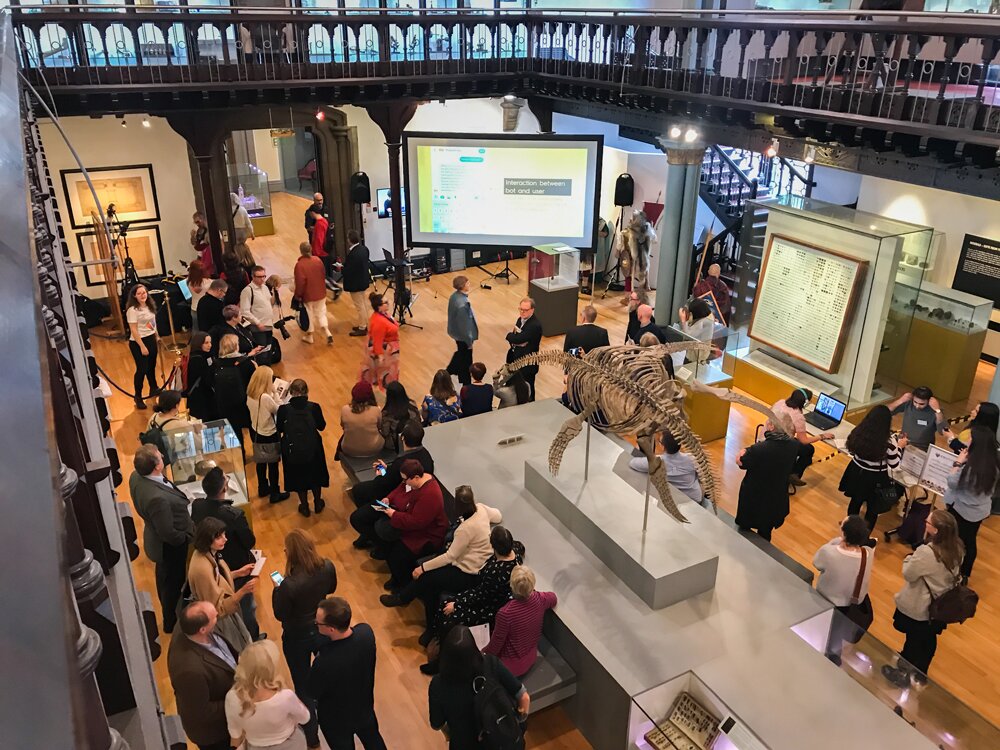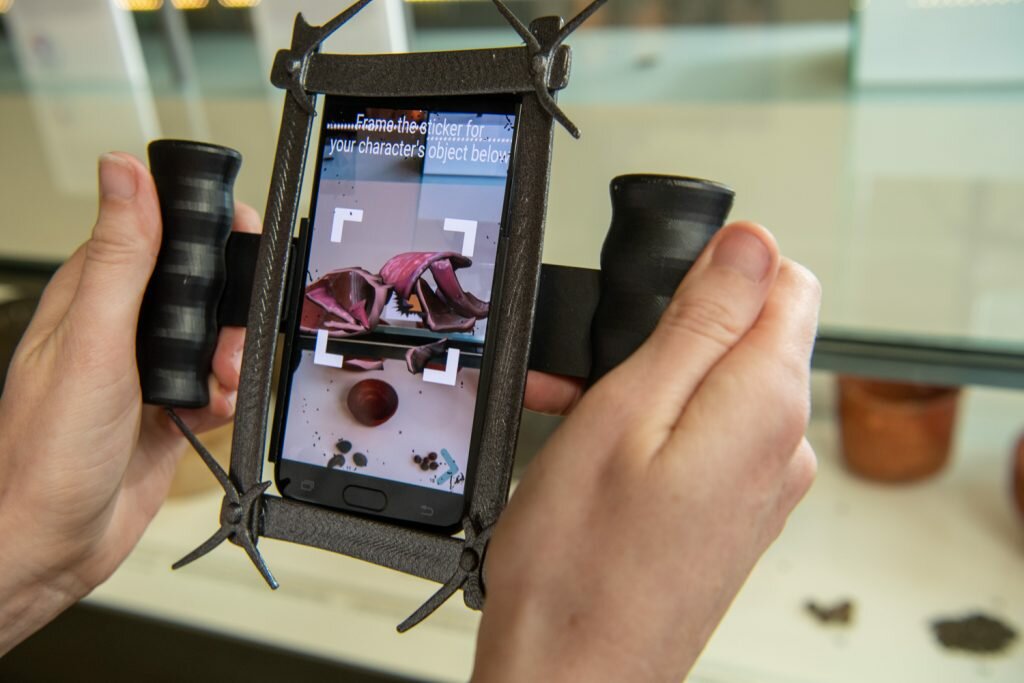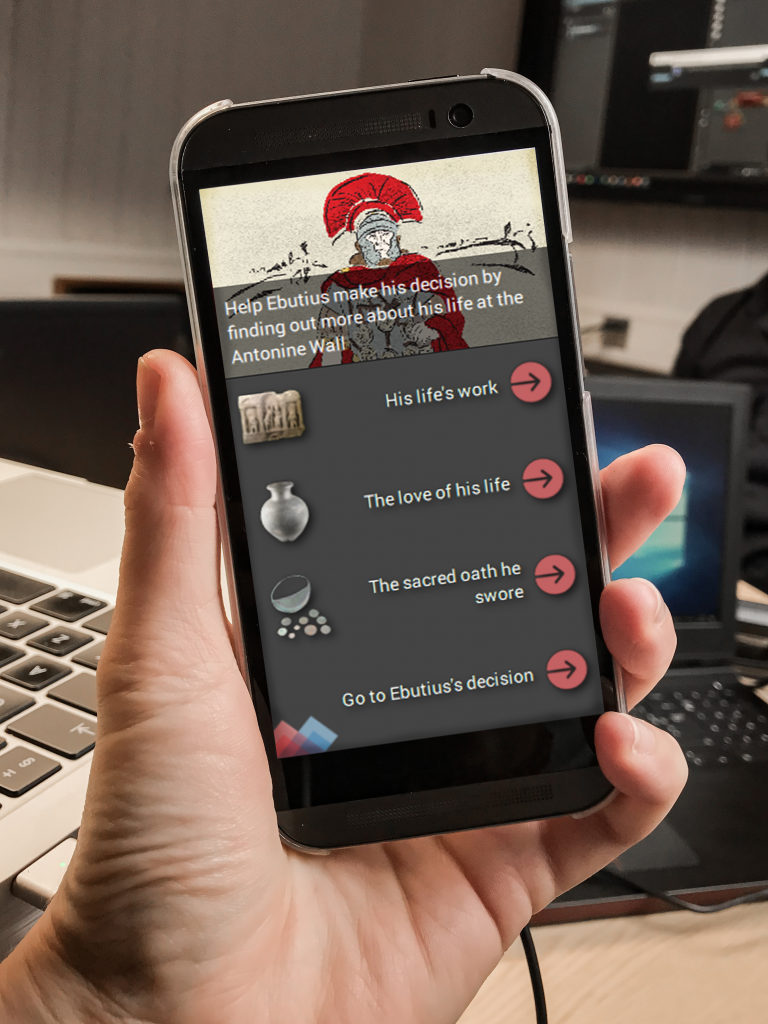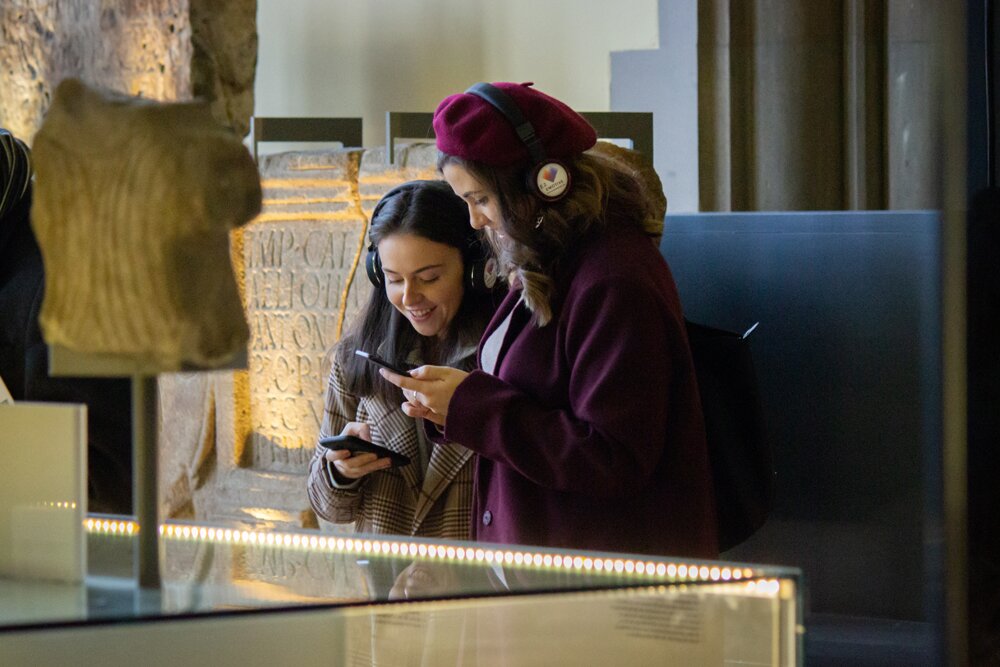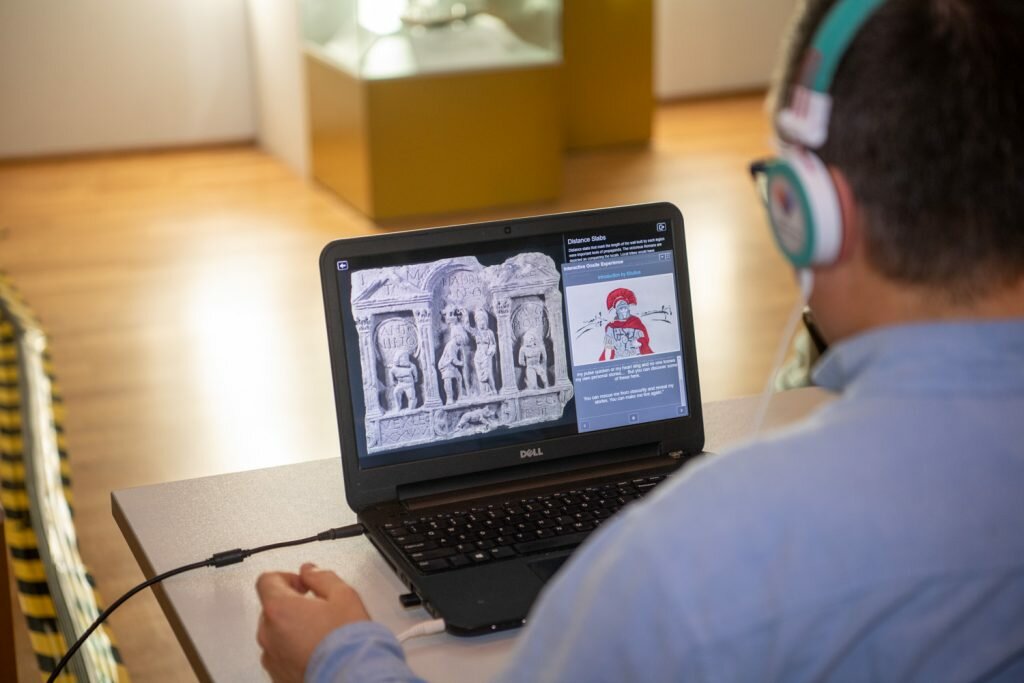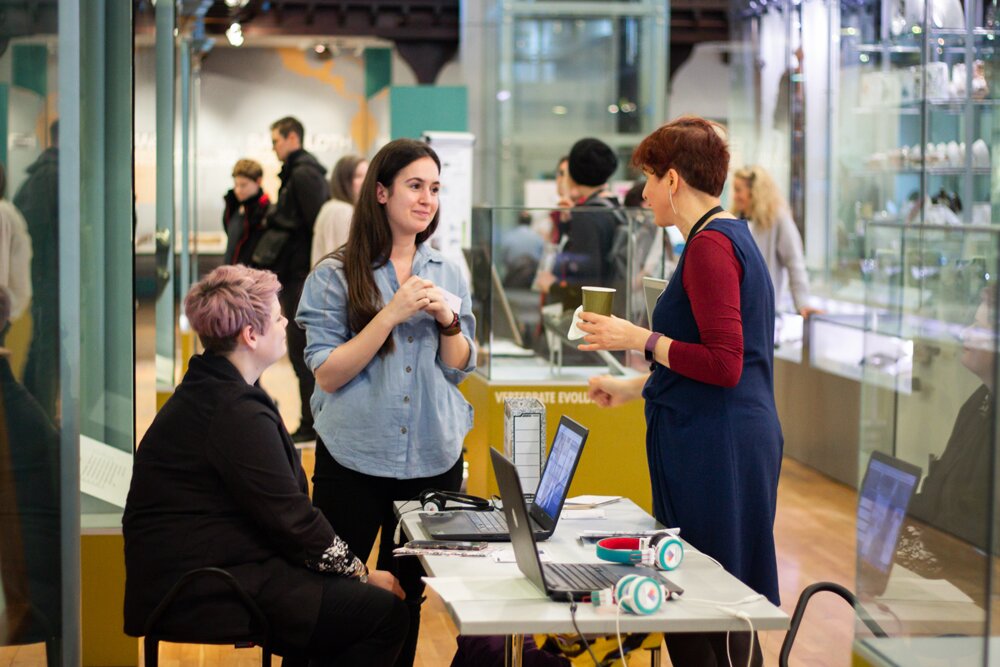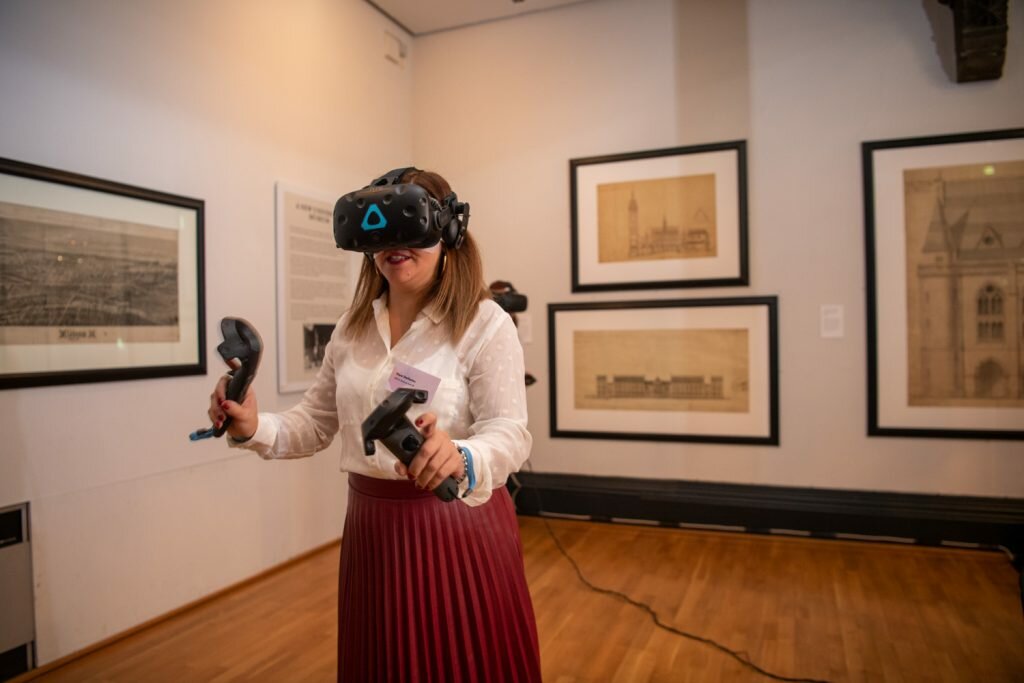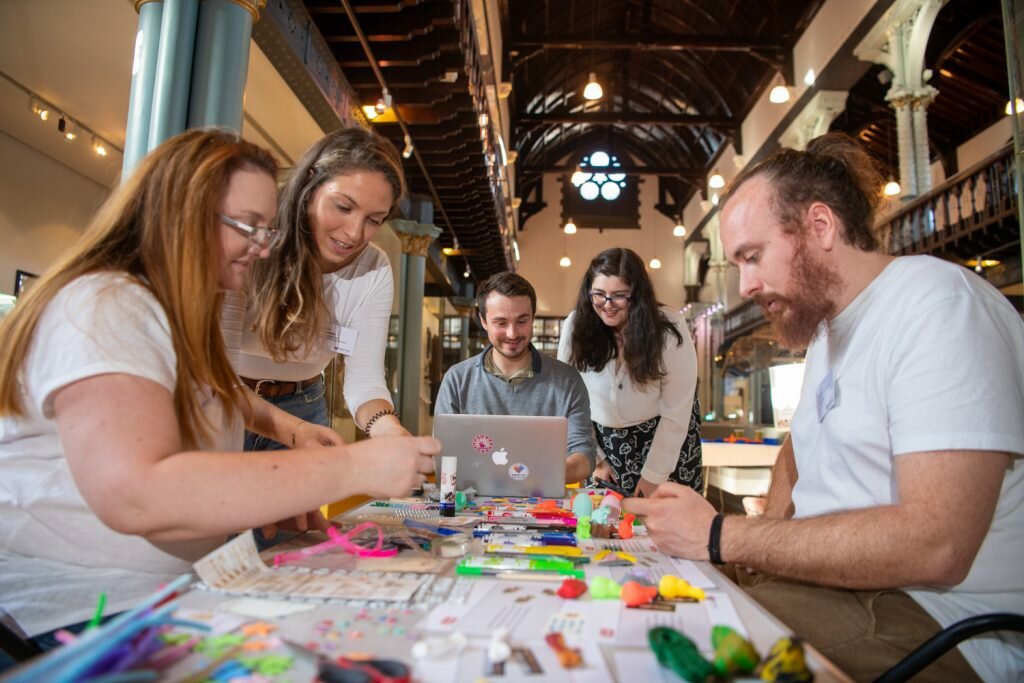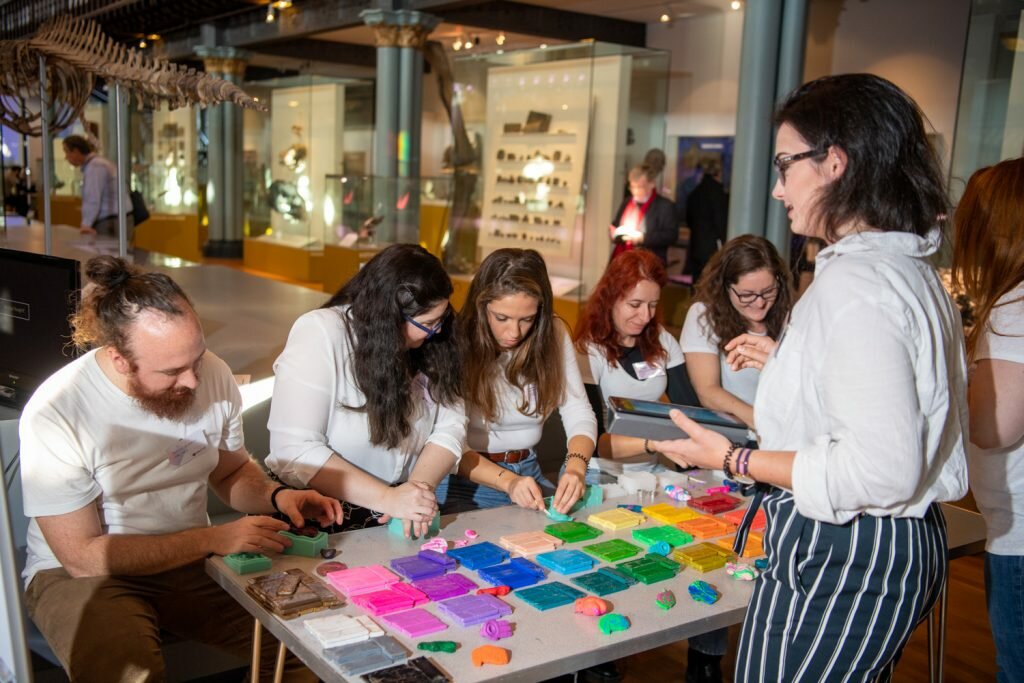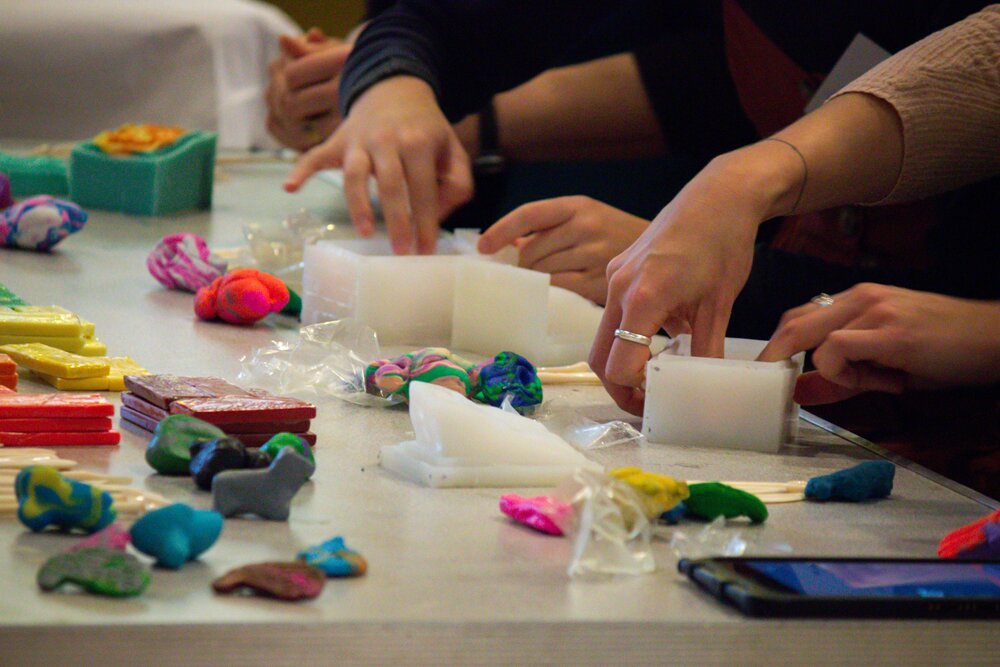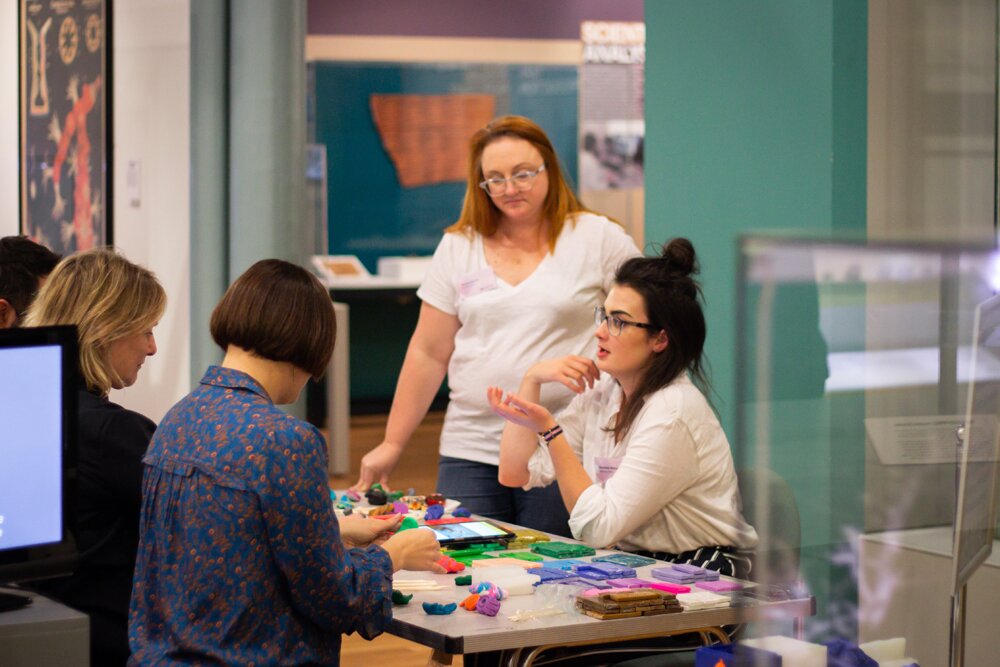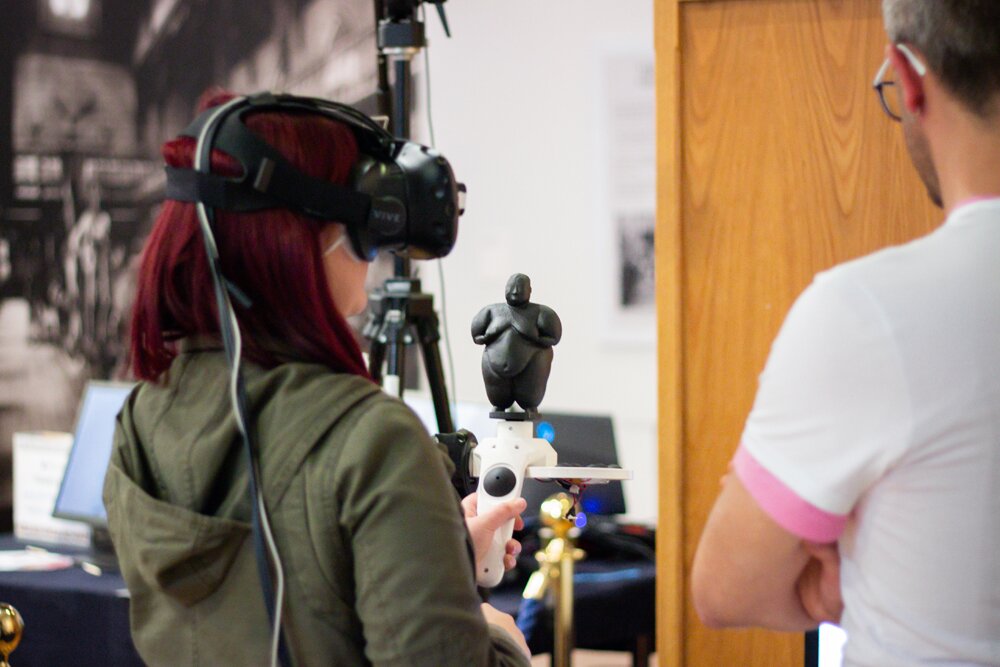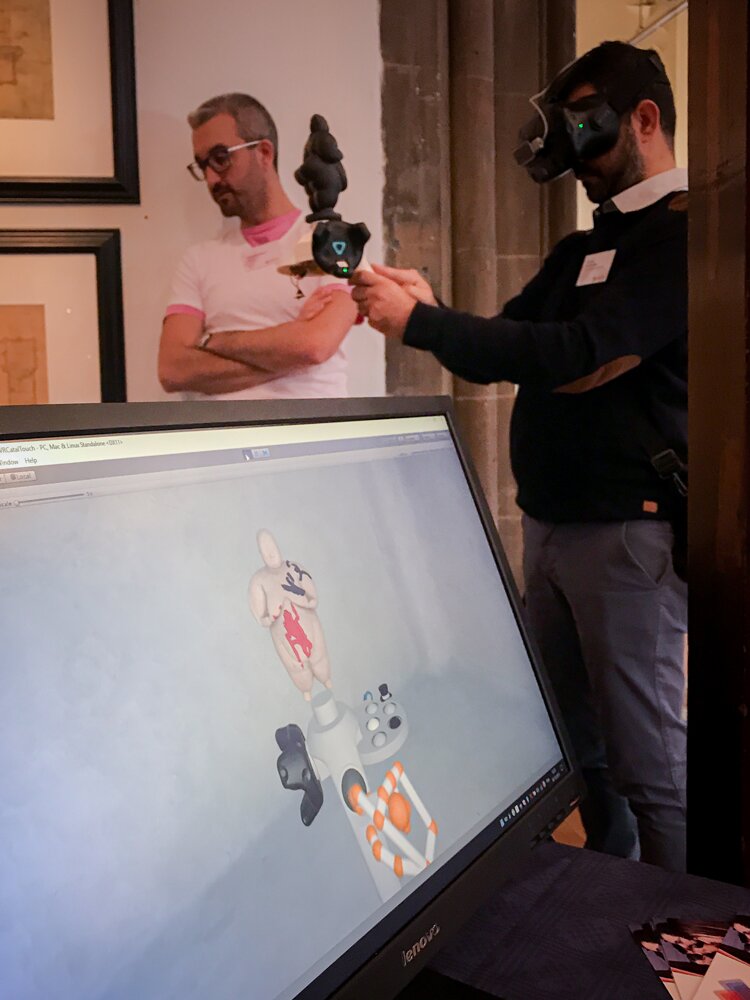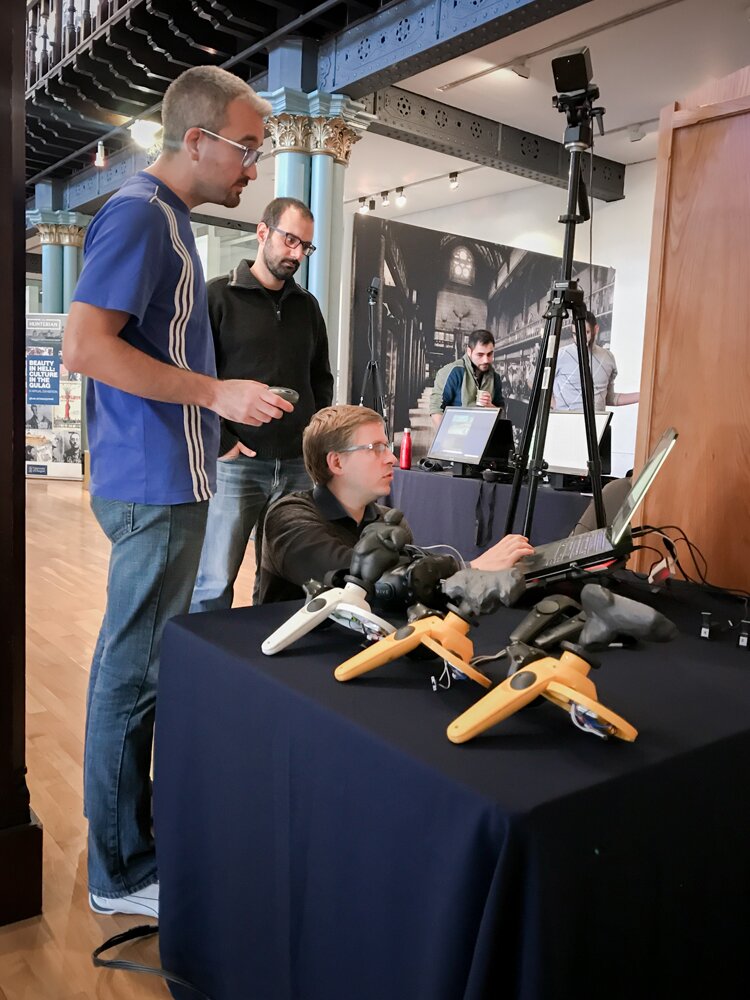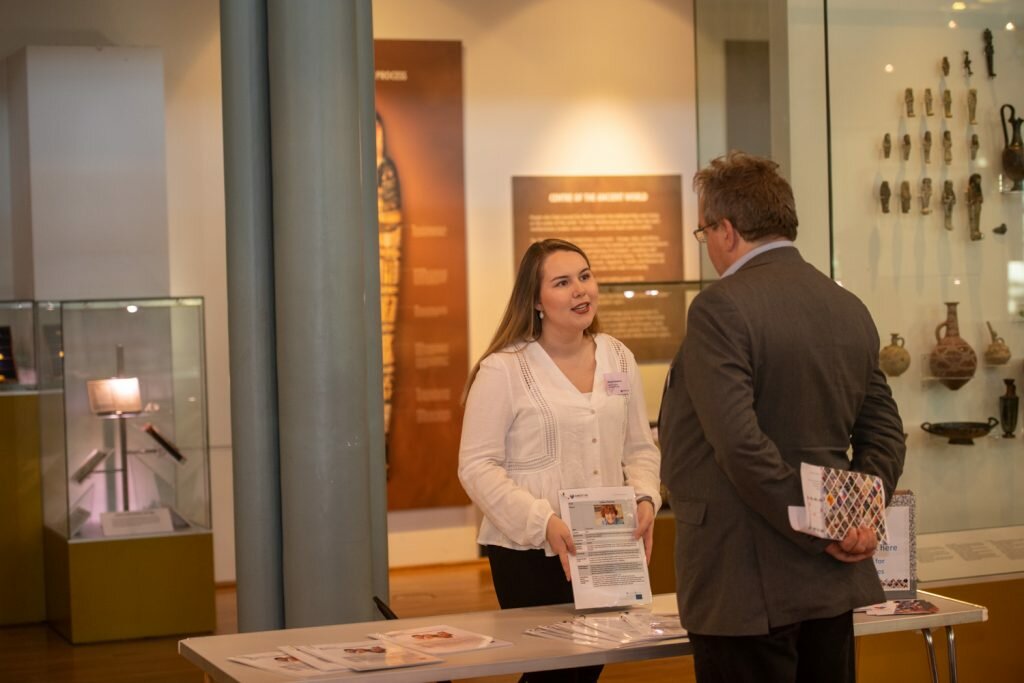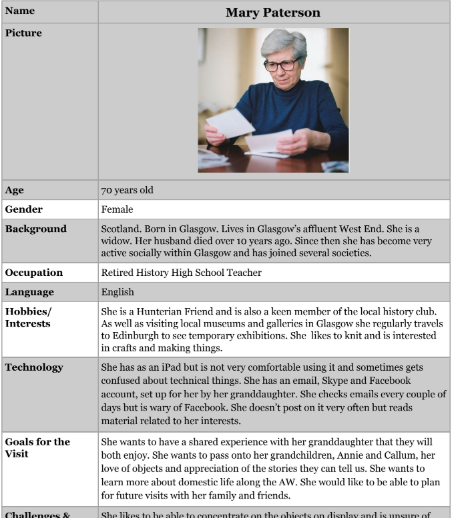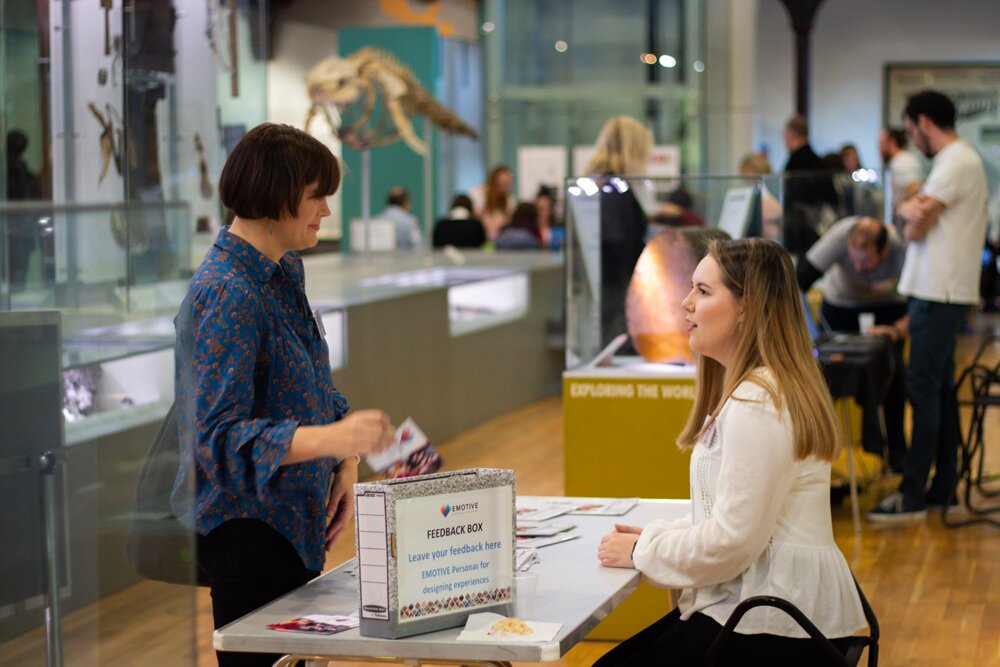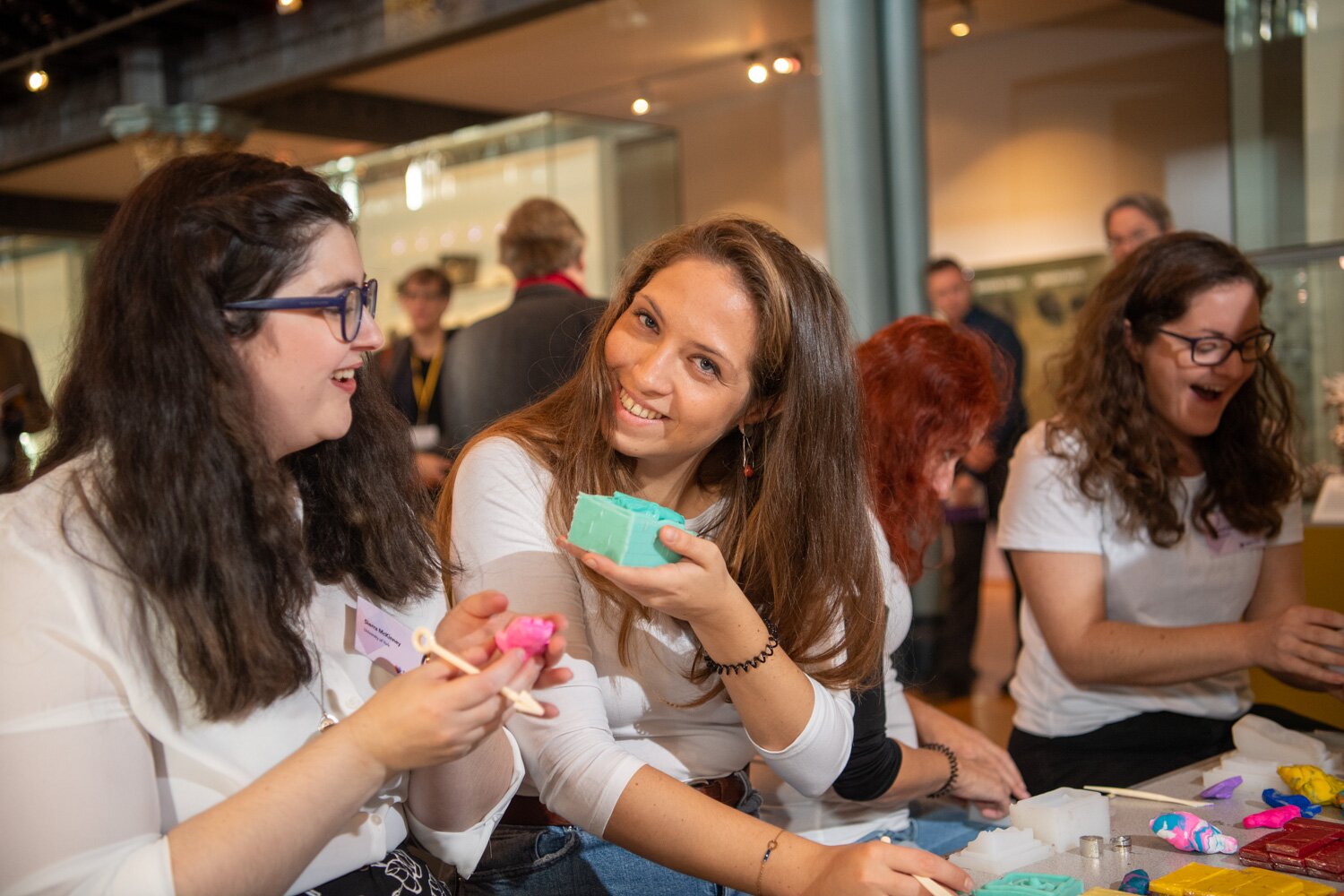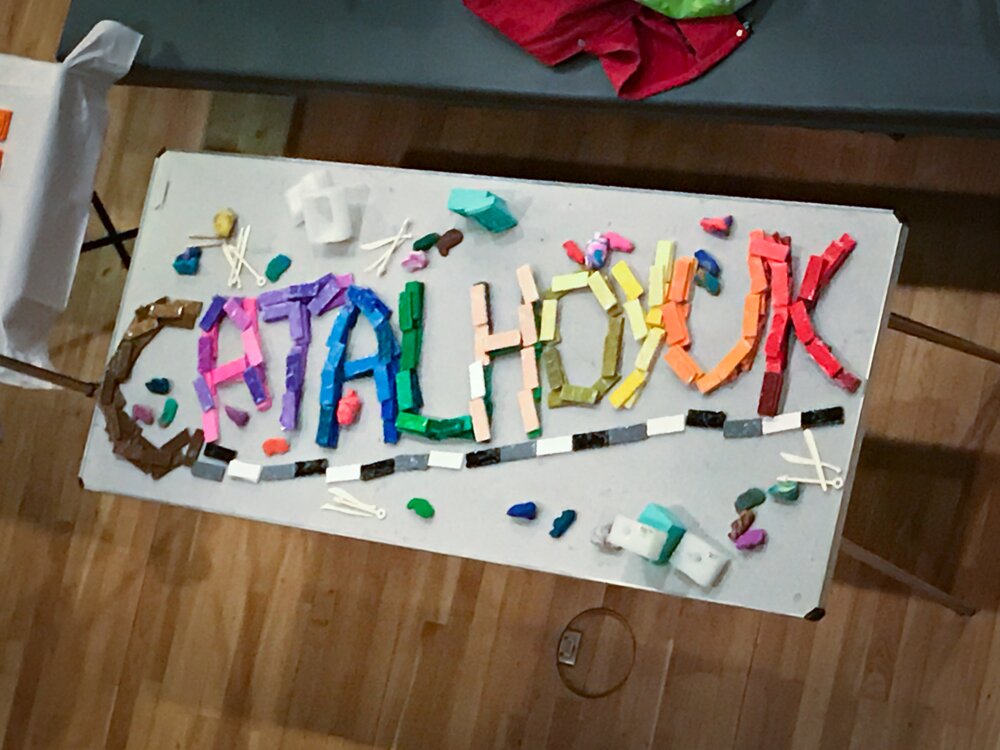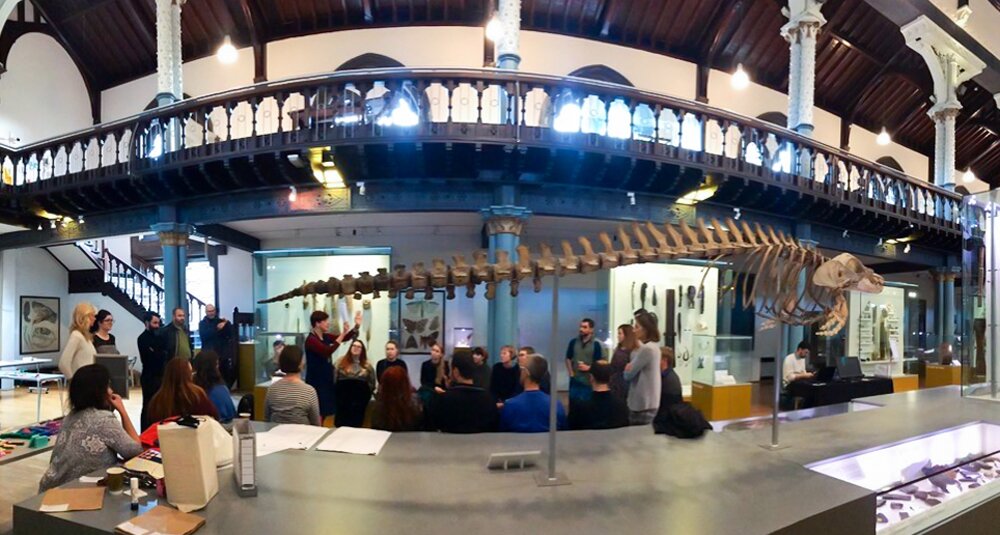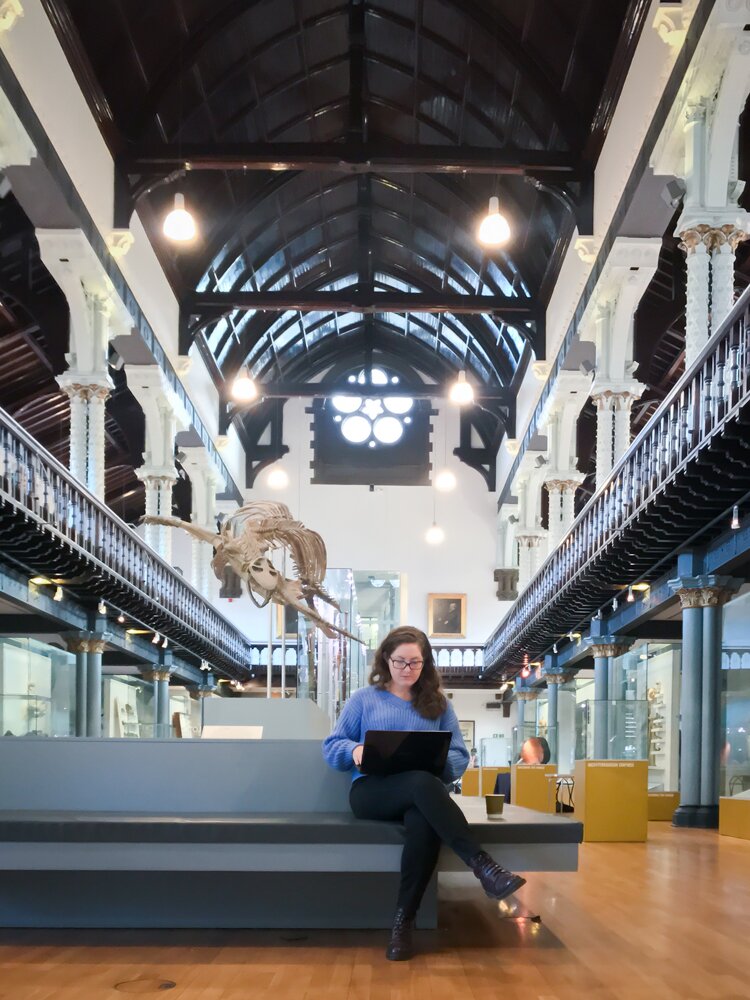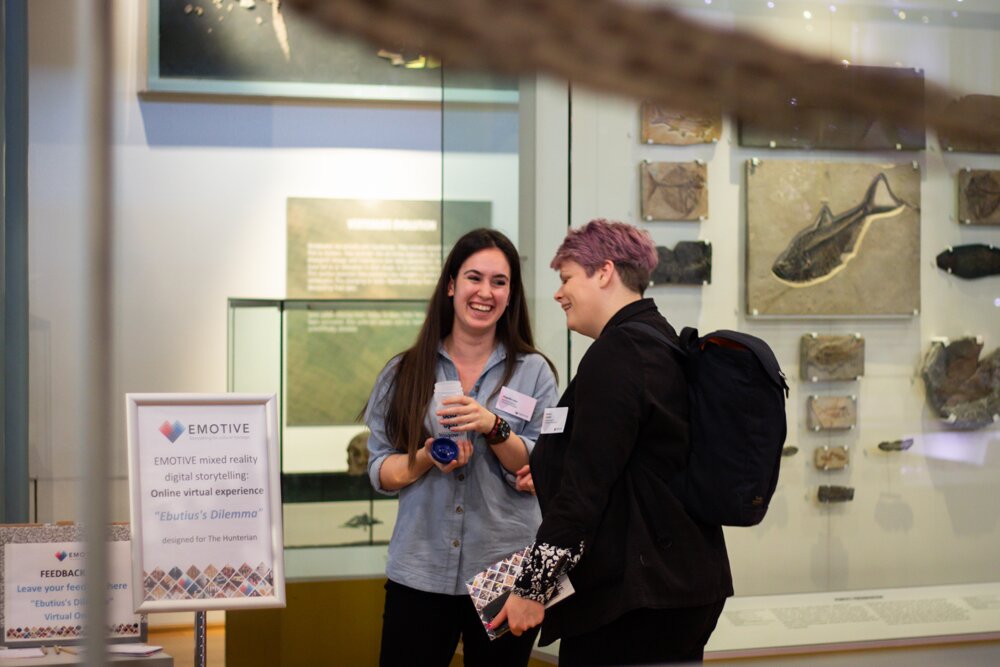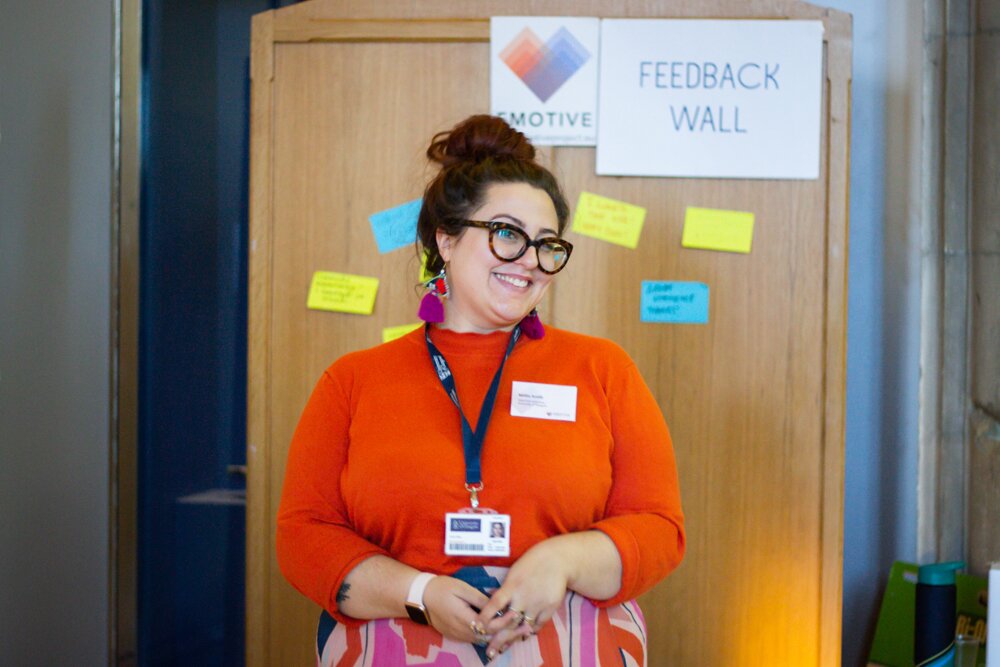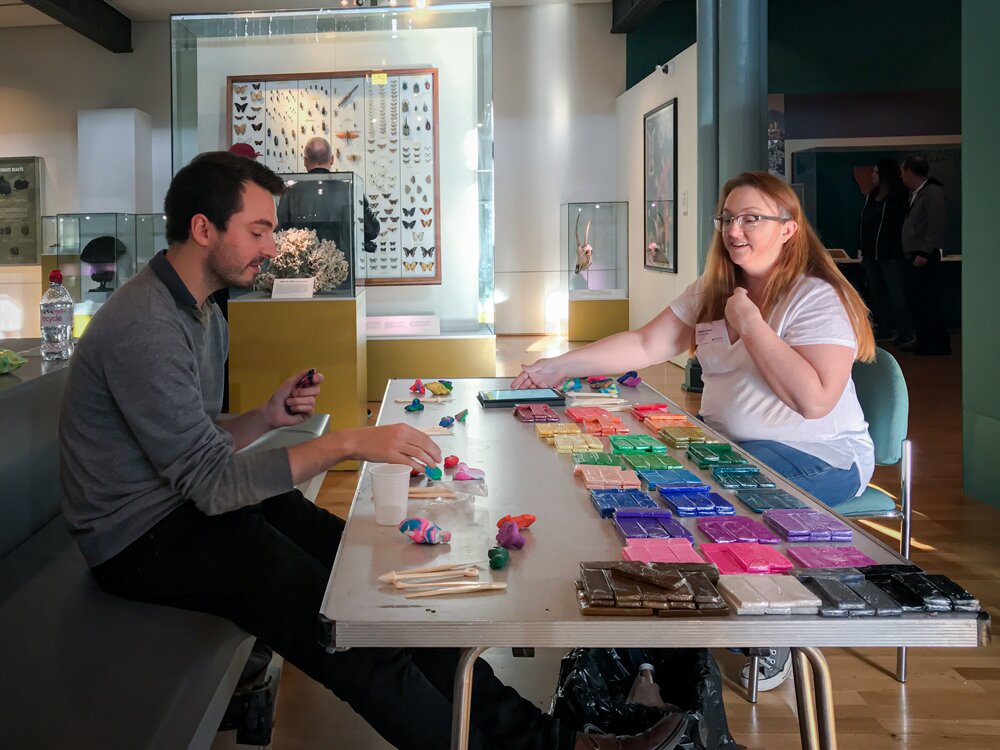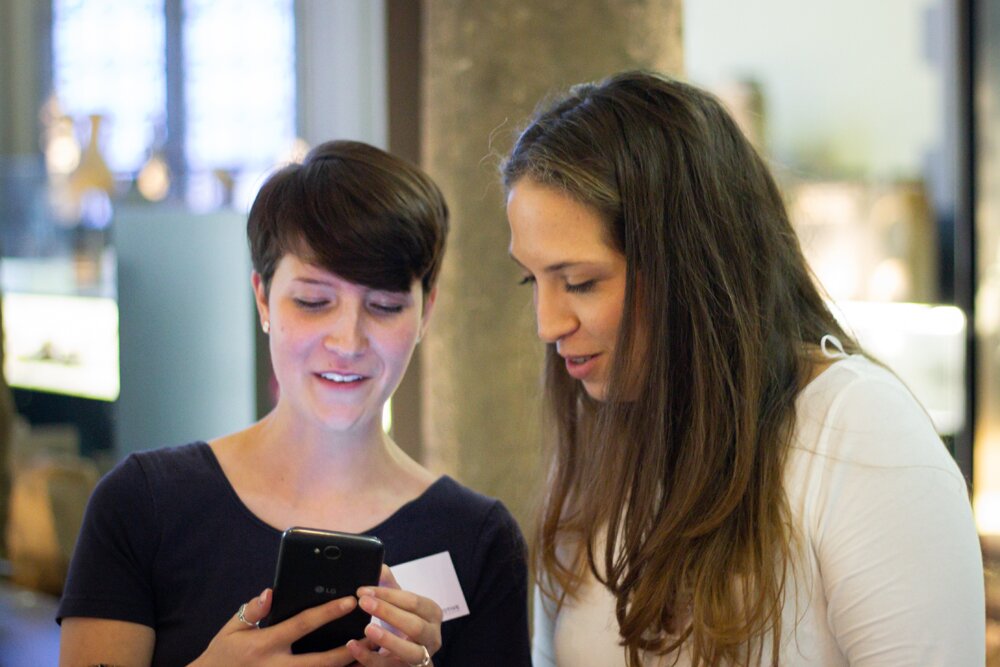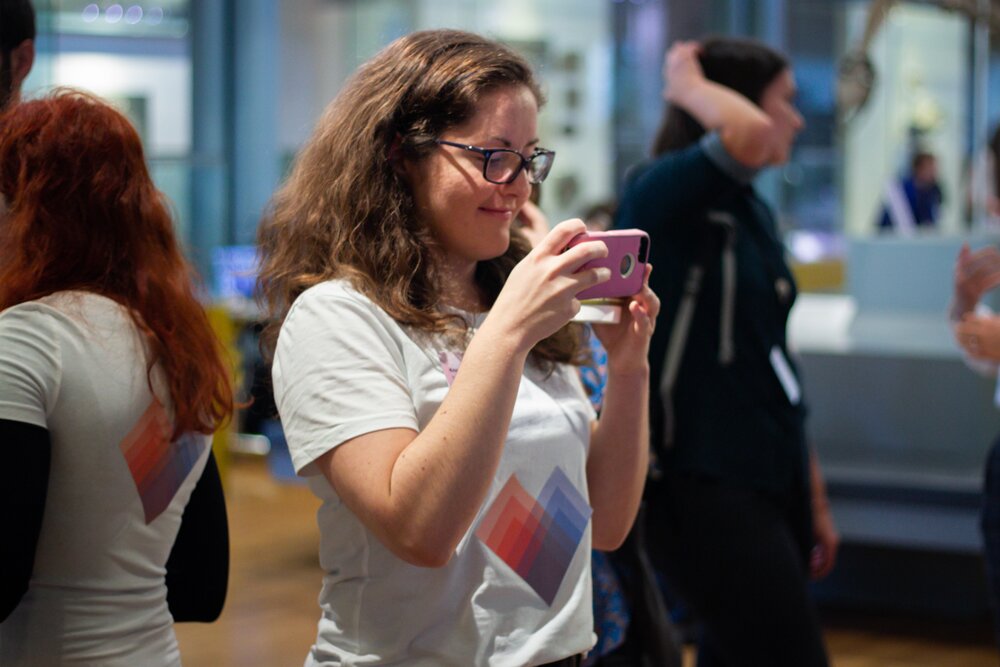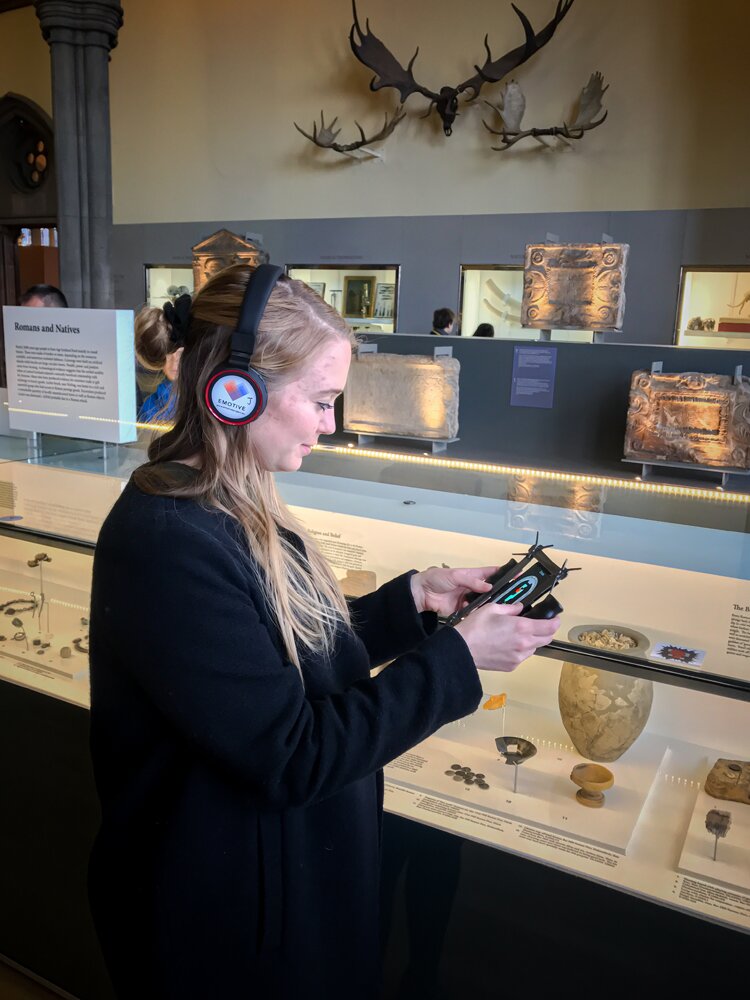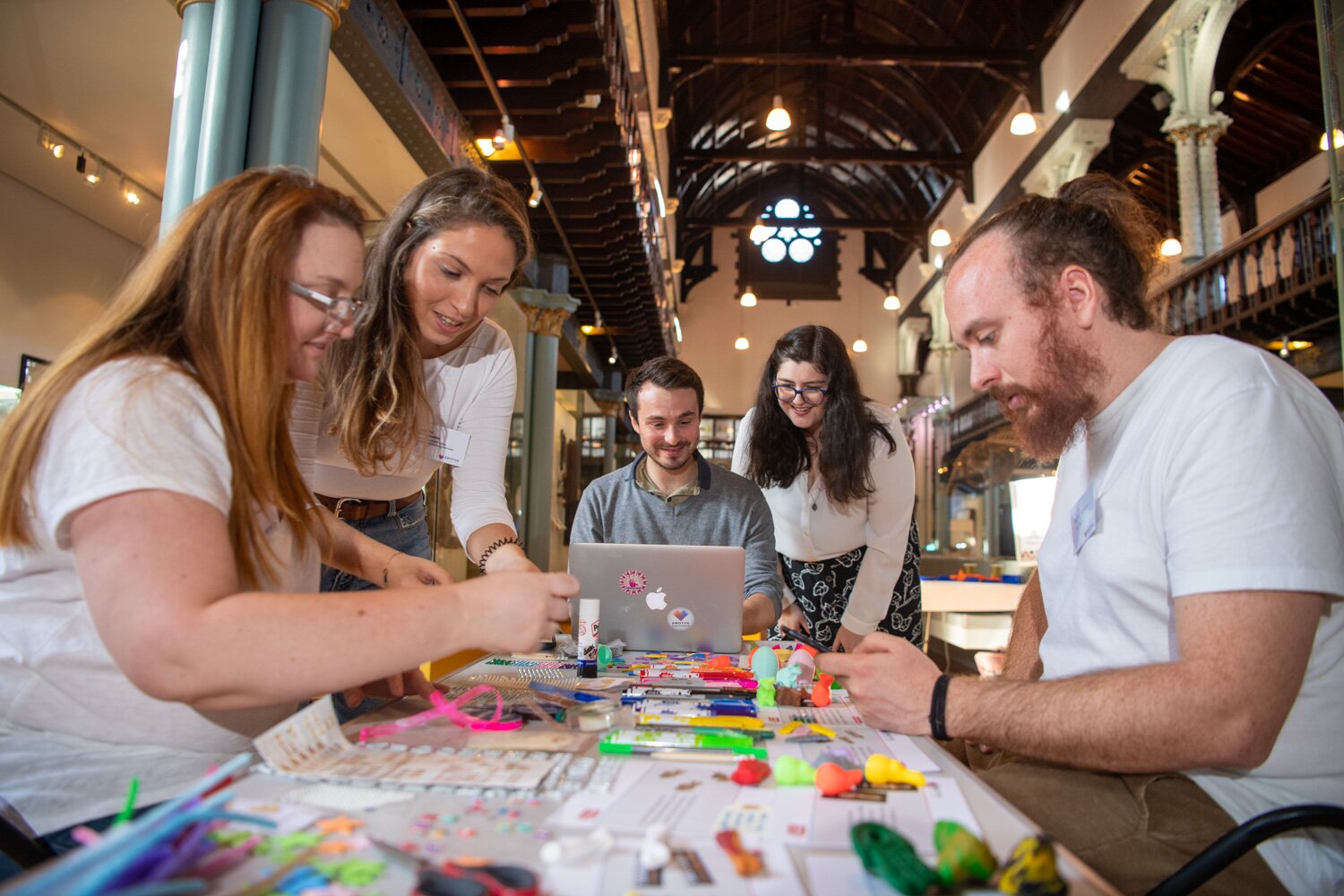The EMOTIVE project's final public demo event took place on 30th October 2019, at the Hunterian Museum at the University of Glasgow. It was a great day for the EMOTIVE team to get together once again as well as the public to finally be able to get a taste of the EMOTIVE tools and experiences. Weeks of intense preparations and hard work, and a lot of coffee made it a success! It was amazing to have all our partners from EXUS, the “ATHENA” Research Center in Information, Communication and Knowledge Technologies, Noho, University of York, University of Glasgow, Diginext, Inria and CNR-ISTI.
In the morning, the EMOTIVE team greeted a group of journalists for a private preview. It went very well and the journalists enjoyed the experiences too. You can listen to the report made by the BBC Radio Scotland for the Good Morning Scotland breakfast programme here and read the Press Release published by the University of Glasgow here.
The public demo event on Wednesday welcomed over 100 professionals and researchers in interdisciplinary fields ranging from digital heritage, museology, user experience design, curatorship, digital engagement, immersive technologies, and interpretation. Together with the public who signed up for the event or were visiting The Hunterian for the day, the guests were invited to try out a range of the EMOTIVE experiences and prototypes created for two cultural sites: Çatalhöyük and the Antonine Wall and the related display at The Hunterian.
The Antonine Guard reenactor group made sure that all got a chance to shake hands with the Scotland's Roman Living History Society patrolling Rome's Northern Frontier after 2000 years, and take a few photos too!

An hour after the demos started, there were a series of short welcome talks.The first was Steph Scholten, Director of The Hunterian, who welcomed all to Scotland’s oldest public museum and commented on the role of EMOTIVE in informing the museum's future audience engagement, collections interpretation and programming. The next speaker, Professor Murray Pittock, Pro Vice Principal for Special Projects at the University of Glasgow, welcomed all to the University and highlighted the importance of the EMOTIVE research and impact for the city of Glasgow, the Scottish economy and beyond. The third speaker, Hara Stefanou from EXUS Software Ltd and EMOTIVE Coordinator, gave a short introduction to the EMOTIVE project, followed by the fourth speaker, Professor Maria Economou, from Information Studies and The Hunterian at the University of Glasgow, who explained the experiences demonstrated and the schedule for the afternoon.

The EMOTIVE experience demos showcased a variety of different applications and tools, including:
1a | Views on Verecunda’s Life: A Digital Window to the Scottish Roman Past
This digital storytelling experience allowed 4 concurrent users to explore the story of a local Caledonian slave girl, Verecunda, who worked at the Roman commander's house in Bar Hill fort, one of the Antonine Wall sites. After getting to know each other, users were immersed in a VR environment introducing Verecunda's life in the Bar Hill fort. Users then moved through the museum display guided by one of the four characters to explore real objects viewed through mobile phones that act like ‘magic windows’, including Augmented Reality interactions. Finally, the users shared what they have discovered about Verecunda and discussed what shaped her identity.
1b | Ebutius's Dilemma onsite
This narrative experience featured the character of Ebutius, a centurion, named after the name found scratched on one of the hammerheads found on the Wall currently on display at The Hunterian. The experience has three main strands: one relates to Ebutius’s working life, another to his personal life and a third to his sense of honour and duty. The users were given a smartphone with a set of headphones and assistance to launch it using an app. The concept of ‘The Things We Leave Behind’ helped explain how the objects on display used to belong or were used by people who lived and worked on the Antonine Wall but were left behind when the Wall was abandoned.
1c | Ebutius's Dilemma virtual online
The users got to try a virtual version of ‘Ebutius's Dilemma’ that was designed for remote online visitors, recreating the museum space with a 360° panorama. This experience retained the story-based approach, so the users could choose their own path through the experience while they navigated their way through the virtual representation of the display to locate objects pertinent to the story.
2 | VR experience for Çatalhöyük
Through this multi-user virtual reality experience, participants were taken on a collaborative adventure through the UNESCO Neolithic site of Çatalhöyük. This experience fosters interaction and emotional learning between pairs of individuals who are tasked with enacting forms of care. Together, participants engage with some of the social practices once common at Çatalhöyük, from artistic expression of group identity to home repair and burial customs.
3 | Digital Education Kit for Çatalhöyük
The Digital Education Kit invited the guests to explore the Stone Age site of Çatalhöyük and its egalitarian society. Through the use of 3D-printed replicas of real artefacts, a virtual tour of reconstructed houses, a ChatBot, and an interactive activity, the users experienced what egalitarianism is, how it is reflected in the archaeology, and what it might have meant to live in an egalitarian community. Although this Kit was designed for use by Key Stage 3 students (ages 11-14), we witnessed that our adult event attendees did enjoy a lot too!
4 | Group Dialogues for Çatalhöyük with 3D moulds
This experience focused on making replicas of ancient material objects and, through engagement with tactile technologies, sparking critical conversation about the relationship between past artefacts and present-day values. Each session started with the creation of objects using novel 3D moulding tools (‘MetaMoulds’). Groups made their objects together using modelling clay, personalised them, and then ventured into dialogue with a human facilitator who guided discussion between participants. The participants could take home their replicas, carrying on the conversation into the future!
5 | Physical Object Manipulation in Mixed Reality Environments
This station showcased one of the EMOTIVE tools that enables cultural heritage creators and visitors to cast their own replicas of historical artefacts. Additionally, with the help of the EMOTIVE’s Object Tracking Plugin for Unity, these objects could be brought back to their original state through a Virtual Reality headset, enabling the visitor to interact, and even playfully engage with the replica, using a responsive tangible user-interface. Emotional engagement with the past becomes much more intense when we are able to touch historical objects, see their colours and feel their texture. And that’s exactly what the participants were able to explore.
6 | EMOTIVE Authoring tool
With the EMOTIVE Authoring Tools, creators and cultural heritage experts are empowered to collaborate and create interactive storytelling experiences for museums or cultural sites. This station allowed the users to find out more about the EMOTIVE Authoring Tools and how they can be used to produce any type of on-site experience, from simple text-based presentations to advanced multi-user AR games.
7 | EMOTIVE Personas
This station offered the participants to explore in more detail and ask questions about the use of personas for designing experiences for cultural heritage. By creating a series of group personas for Çatalhöyük, and testing the efficacy of them in a series of workshops, the EMOTIVE team has tailored the experience based on the actual types of visitors we see at Çatalhöyük. Using this novel method of experience design was an important step towards the success of EMOTIVE, and we were delighted to share our knowledge on the subject with a wider audience.
8 | EMOTIVE in schools and the Curriculum for Excellence
At this station the participants were able to learn how EMOTIVE was integrated in educational resources designed for teachers to use when planning their independent visits with their classrooms. It also showcased the integration of the EMOTIVE Hunterian online and onsite experience ‘Ebutius’s Dilemma’ to the Scottish Curriculum for Excellence and it’s evaluation with both Primary and Secondary teachers and schoolchildren.

The event was supported by the University of Glasgow's newly created Digital Cultural Heritage Network (funded by the Arts Lab), an interdisciplinary network based at the University of Glasgow with partners across the heritage and creative industries.
We were overwhelmed by the reactions and buzz from all our participants and guests on the day, as well as those who couldn’t join us but participated from afar, reflected on Twitter and Instagram. Thank you all for spreading the word!
We would like to thank the staff at the Hunterian Museum and the University of Glasgow for hosting us and helping us organise and run the event so smoothly. Last but not least, thank you to all our fabulous volunteers from the universities of Glasgow and York (current students, mainly postgraduates and PhDs, and recent graduates) who helped us with great enthusiasm on the day and brought a lot of smiles too 🙂
The EMOTIVE Demo was a great success and we only wish we could do it more often. It brought a lot of interest in our tools and experiences from cultural heritage and creative industry professionals that we hope to follow up. A day filled with great energy and fun while making heritage more accessible and inspiring through storytelling and digital technologies. Thank you x

View the full gallery of photos from the EMOTIVE Demo event here.
